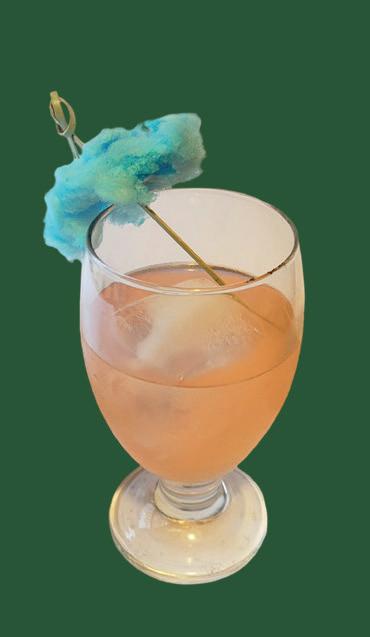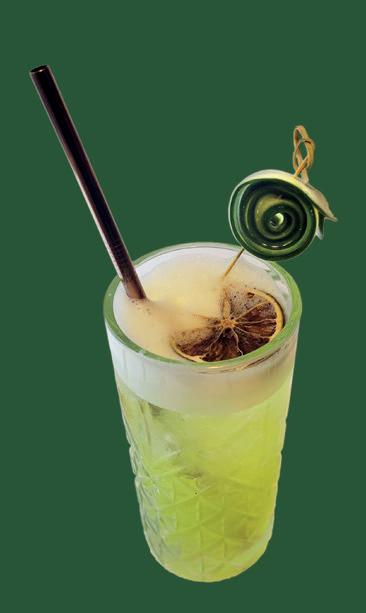












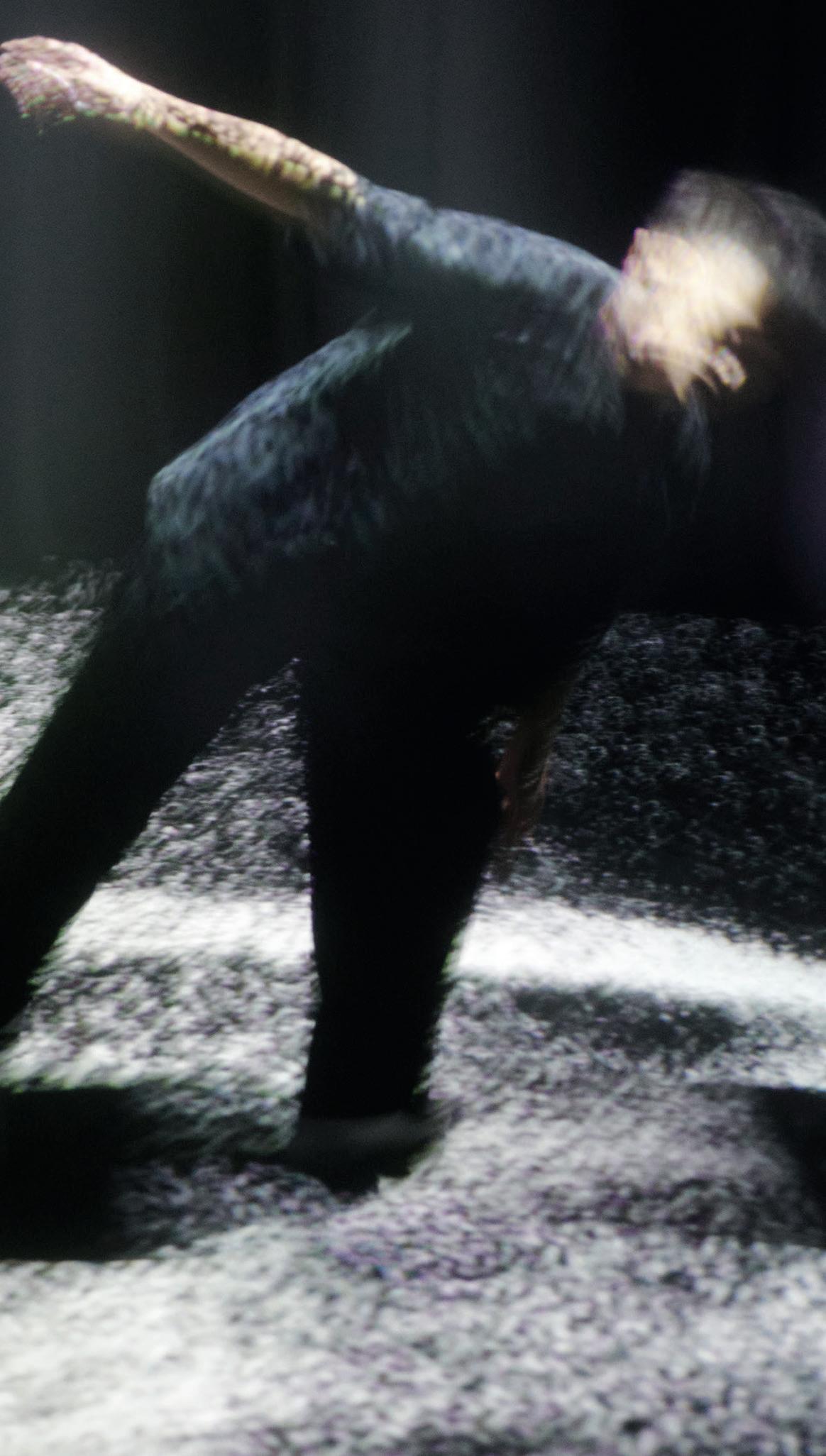





















A
Conservative MP accused of homophobia in House of Commons
Maria Cholakova and Geneviève Sylvestre

At the last Concordia Student Union (CSU) Regular Council Meeting (RCM), student and ex-council member Dave Plant raised concerns with the Studentcare Legal Care Program (LCP).
On July 17, the CSU hosted a Special Council Meeting (SCM) where councillors unanimously voted in favour of implementing the LCP. e program o ers students legal representation in areas such as housing, employment and human rights disputes, as well as legal consultations.
e LCP contract signed by the CSU came into e ect Sept. 1, and the initial term will last until Dec. 31. In order for services to continue, students will have to vote in the upcoming Fall 2024 CSU by-elections in favour of extending the program for an additional three years and eight months.


The CSU chair sent the LCP contract to The Link in an email on Sept. 13. e contract, if passed, will cost $30 per student per year, totalling $1,050,000 per year for 35,000 students and $4,200,000 over four years.

@_maria_cholakova_ @gen.sylvestre
letter commissioned by Plant, “ e fee applicable for this initial term is $10 per student, for a total cost of $350,000.
Assuming an approximate undergraduate student number enrolment of 35,000 members for the CSU.”

When e Link asked Rahaman to clarify this statement, he explained that he was referring to the fact that “[payment] isn’t going to come out of your pocket this semester, but you're going to receive [access to the LCP] this semester. So, it's deferred.” e contract signed by the CSU states: “In the instance of the Referendum passing, the CSU would use accumulated Reserve Funds in order to cover the expenses of the program for the period of September-December 2024 at a pro-rated cost of $10.00 per Member including HST or until the new levy is introduced.”
Rahaman told council members prior to council voting on the LCP contract that “it’s an insurance product.”
Rahaman later clari ed to e Link that he misspoke, as he is used to referring to the service as an insurance product colloquially.

As with other fee-levys, students will have the opportunity to opt-out if they wish.
Costs and fees
At the RCM, Plant presented a legal review of the LCP contract that he had commissioned and motioned for the contract to be immediately cancelled.
If passed at referendum, the CSU would use insurance surplus to pay for the initial four-month term of the Studentcare contract at the cost of $10 per student. e CSU would also renounce its right to unilaterally terminate the contract.
According to the legal review, if students vote against the LCP at referendum, the CSU will still have to pay for the initial four-month term of the Studentcare contract, with the cost split between the union and Studentcare, totalling $175,000 dollars.
According to Rahaman, only students covered by the CSU Health and Dental Plan would account for the $10, making the total cost closer to $100,000. During the SCM, Rahaman told councillors that the CSU would take a “minor hit” in the event of a failure at referendum.
When a councillor at the RCM brought forward a question regarding the amount the CSU would lose if the referendum were to fail, Plant said, “Is $175,000 minor? I'll leave that to you to decide.”

Other issues raised by Plant in both the RCM and legal review concern clauses assessing Studentcare’s role in the contract. e legal review outlines how Studentcare has sole discretion on selecting a law rm to deliver the LCP, Studentcare and its directors may become minority shareholders in the chosen law rm, and Studentcare is not responsible for the quality of the LCP.

Insurance surplus refers to money that has been paid by students for their insurance, but has not been used. In the SCM minutes, CSU general coordinator Kareem Rahaman said that the CSU can only use the money in limited ways.
“We can either use it to reduce premiums—but we’ve already reduced the premium—or we can use it to subsidize other services and that’s what we’re trying to do here,” Rahaman said.
At the SCM, Rahaman also told councillors that “Studentcare o ered to pay from Sept. 1 up until the referendum.”
However, according to the review
One of Plant's main concerns with the LCP is that, as opposed to the other services Studentcare o ers through the CSU Health and Dental Plan, it is not an insurance product.
According to Plant, council members were running on false pretences and misinformation.
“Just through the minutes that got brought up in [the SCM], there are falsehoods. I think it's up to the executives to lay out, in layman’s terms, what the council members are voting for,” Plant said. “ e only reason I understood how bad of a deal this was, is through a legal review of the contract.”
In the SCM minutes from July,
coverage students already have. Studentcare coverage e legal review letter outlines that, according to the contract, the LCP does not o er representation to students who are otherwise already covered by a government agency or union. In the case of employment rights representation, areas already covered by the Commission des normes, de l’équité, de la santé et de la sécurité du travail (CNESST) are not covered by Studentcare.

When asked about the clause, Rahaman explained that “it's something we look at for sure. […] Every other university that's signing these contracts, we're all signing the same contract here. No issues [have] ever arisen from it.”
According to Studentcare representative Alexander Golovko, the service would be helpful for students at the university.

Prime Minister Justin Trudeau accused a conservative MP of making homophobic comments in the House of Commons on Sept. 25, as reported by CBC. Conservative MP Garnett Genuis allegedly made a joke about Consul General Tom Clark engaging with [international leaders] in the bathtub of his luxury New York condo. On Sept. 26, Genuis denied the joke’s relation to homophobia in the House of Commons.
Valerie Plante calls for ceasefire in Middle East

“We truly believe that the [LCP] would be a signi cant enhancement to the student experience at Concordia,” said Golovko. “Concordia students would be joining over 300,000 students covered by the program across the country.”
Rahaman made reference to the high level of satisfaction with the LCP in other universities in Quebec and Canada, including McGill. e Link has not been sent these statistics by the CSU in time for publication.
Current services
CNESST already covers complaints relating to labour standards, pay equity, occupational health and safety, hazardous situations, and complaints concerning the contracting process.
Additionally, Studentcare does not o er human rights representation in situations where a student is already covered by the Commission des droits de la personne et des droits de la jeunesse (CDPDJ).
Further concerns in legal review
According to information given by a councillor at the Sept. 18 RCM and con rmed by the chair, councillors were given 45 hours to read through and decipher the LCP contract and talk to their constituents before the SCM in July. is is in line with existing CSU by-laws and procedures.

e CSU currently has its own services that provide students with help around topics like housing, employment, academic disputes and legal questions in the form of the Advocacy Centre, the Housing and Job Resource Centre (HOJO), and the Legal Information Clinic (LIC).
“I think people who go to Concordia enjoy these little services that are o ered to them, like a stone's throw away,” Plant said. “LIC, HOJO, Advocacy Centre, you can just go into their o ces, go and chat with them.”
When the contract was presented to council, it had already been signed by CSU general manager Robert Henri three weeks prior.
According to Rahaman, Henri’s signature was meant only as a show of support, and the fully signed contract containing the signatures of Rahaman and CSU nance coordinator Souad El Ferjani was only sent to Studentcare a er the motion to approve the contract was passed at the SCM.

Rahaman explained that Studentcare will work in tandem with existing CSU services to complement the
The legal review also highlights that the LCP does not cover legal representation for international law, a field of law the letter claims is “very much in demand by the many international students who are members of the CSU.”
During the SCM, Rahaman told councillors, “You pay $30 in advance and you have access to a lawyer for housing and immigration law.” He later clarified with The Link that he was only referring to legal consultation.
At the RCM, councillors voted to create a standing committee to overview the contract. At the time of publication, the committee has not yet met.

Montreal Mayor Valerie Plante took to X on Sept. 26, calling for an immediate ceasefire “in the name of peace and the protection of civilian populations in Palestine, Israel and Lebanon.” The tweet followed recent Israeli air strikes on Lebanon. Lebanon’s health ministry has reported that over 1,000 Lebanese citizens have been killed and 6,000 others injured since Israel’s bombardment began two weeks ago.
Concordia launches new student safety patrol
The Concordia Campus Safety and Prevention Services (CSPS) established a new Student Safety Patrol Program. The Concordia website states that volunteers will “patrol campus to promote safety and security,” but will not have to “intervene in incidents or conflicts.” Concordia spokesperson Vannina Maestracci said that the role of the volunteers will be “to observe and report back to CSPS agents who will follow up as needed.”
Over 100-year-old theatre closing its doors
The La Tulipe theatre announced it will be forced to close due to an order from Quebec’s Court of Appeal to stop all noise emitted from sound devices. This announcement came after years of legal issues with the venue’s neighbour, who bought the building adjacent to the theatre in 2016 after it was mistakenly zoned as a residential building by the City of Montreal. Following this announcement, Montreal said it will modify the noise bylaws in the Plateau neighborhood.

Demonstrators smashed windows and threw Molotov cocktails at police officers
Alice Martin

During the evening of Sept. 29, the lobby windows of Concordia’s Henry F. Hall Building were shattered as part of a demonstration and march organized by autonomous students.
Demonstrators also spray-painted pro-Palestine messages like “Free Gaza” and “C = Complicit” on the windows of the Hall building lobby. As they marched, demonstrators also held a banner that read “Hope lies in the ght” with an anarchy symbol next to the message.
Around 50 demonstrators had gathered on De Maisonneuve Blvd. for an “impromptu demonstration,” according to SPVM spokesperson Jean-Pierre Brabant. He said the windows were broken using blunt objects like baseball bats and hammers.
Four arrests were made on the scene, police later identi ed the arrestees to be in their 20s. e demonstrators were released without charges conditional to the results of an ongoing investigation.
“I am extremely concerned about the violent escalation of recent protests,” said Concordia President and Vice-Chancellor Graham Carr in a statement sent out to students on Sept. 30. “Concordia students, faculty and sta can certainly express themselves in a civil and respectful manner, but we cannot, as a community, tolerate intimidation or hatred in any form on our campuses.”
Montreal police arrived on site after 911 calls reported broken windows at the university, but by then demon-
strators had already begun walking down De la Montagne St. e march continued down Sainte-Catherine St., with demonstrators breaking the windows of multiple store fronts, according to Brabant.
e SPVM representative said that multiple police o cers attempted to scatter protestors who were committing criminal acts, with some o cers chasing a er demonstrators.
“During the pursuit, demonstrators threw at least two Molotov cocktails and incendiary objects in the direction of the police o cers,” Brabant said. He added that no one was hurt in the demonstration.
According to videos circulating on social media and shared by accounts such as @clash.mtl on Instagram,
Reflecting on the heights of activism this past year and the future of the movement
Hannah Scott-Talib @_alcmrtn @hannah.sctt

It will soon be one year since Oct. 7. Exactly 357 days ago, the Palestinian militant group Hamas red rockets into and re-entered the occupied territory known as Israel, killing over a thousand Israeli civilians, according to Israeli ocials. Israel’s retaliation of the event continues, with the displacement of over 2 million Palestinians and 42,000 con rmed Palestinian civilian murders to date, according to the Gaza Health Ministry.
Re ecting on the past year, advocates for Palestine in Montreal talk about how the Palestinian liberation movement has progressed and discuss where it is now.
Peaks of activism
Last year, the rst peak in mobilization came immediately a er Israel’s escalated attacks on Gaza.
“In the heat of the moment, everyone just wanted to do something for Palestine. ey didn’t care what we were doing [or] how we did it, as long as we did something,” said Hassan Ridha, a member of Concordia University’s aqalayn Muslim Students’ Association and an active advocate for Palestine.
“We hadn’t mobilized this quickly and this e ciently until an attack happened, until we saw the death numbers rise signi cantly
within a matter of days,” Ridha said. “So this is when we reacted.”
Ridha added that, over the past year, another key point in the liberation movement was the establishment of the encampment at McGill University.
“When students came together to say ‘No, we’re not going to get used to what is happening in Gaza, until the university meets [our] demands we’re not just going to sit idly,’” he said, “I think this revived the spirit of many people who weren’t as involved anymore with the movement.”
Ridha isn’t the only one that feels like the encampment was a key step towards liberation.
“ e encampment set a precedent,” said a member of Students for Palestine’s Honour and Resistance Concordia (SPHR ConU), who has been granted anonymity for safety reasons. ey said that the encampment saw a huge surge in student mobilization in particular, and that it set a precedent for what was considered fair protest in Montreal through McGill’s two rejected injunctions to dismantle the encampment.
According to Ridha, throughout the year, collective activism for the Palestinian cause was the most prominent directly following
Israel’s heaviest attacks. He said there was a surge in activism most recently following Israel’s air strikes on Lebanon that began on Sept. 23. “People came back together a er they saw the heavy bombardment of Beirut,” Ridha said, “which at least shows consistency, that we are able to come back together [and mobilize].”
e future of the Palestinian cause
“Over the last year, I think we’ve seen action from the masses at, what I would say, is an unprecedented and an inspiring level,” said Haya, a member of e Palestinian Youth Movement’s (PYM) Montreal chapter, whose last name has been kept anonymous for safety reasons. “People have responded to the fact that the genocide has been going on for a year and continue to respond to it.”
Now, Haya added, PYM is looking to shi to more long-term forms of activism. She said that PYM recently launched a new campaign entitled “Mask O Maersk.” which aims to target one of the largest shipping companies in the world, the A.P. Moller-Maersk Group.
“[Maersk] acts as a middleman for arms and weapons shipments to Israel,” Haya said. According to her, “We know that by interrupting
reworks were also set o during the march.
“We will aim to gather evidence and see with surveillance cameras if we can nd any information to know who did what and if anyone committed criminal acts,” Brabant said.
According to police, the demonstration died down at around 11 p.m.
In his statement, Carr said that Concordia is assessing the events and will take “appropriate action” in accordance with the university’s Code of Rights and Responsibilities.
is event follows a Sept. 25 pro-Palestine student walkout where Concordia students demanded the university divest from Israel. e walkout saw severe police intervention, as well as three arrests.

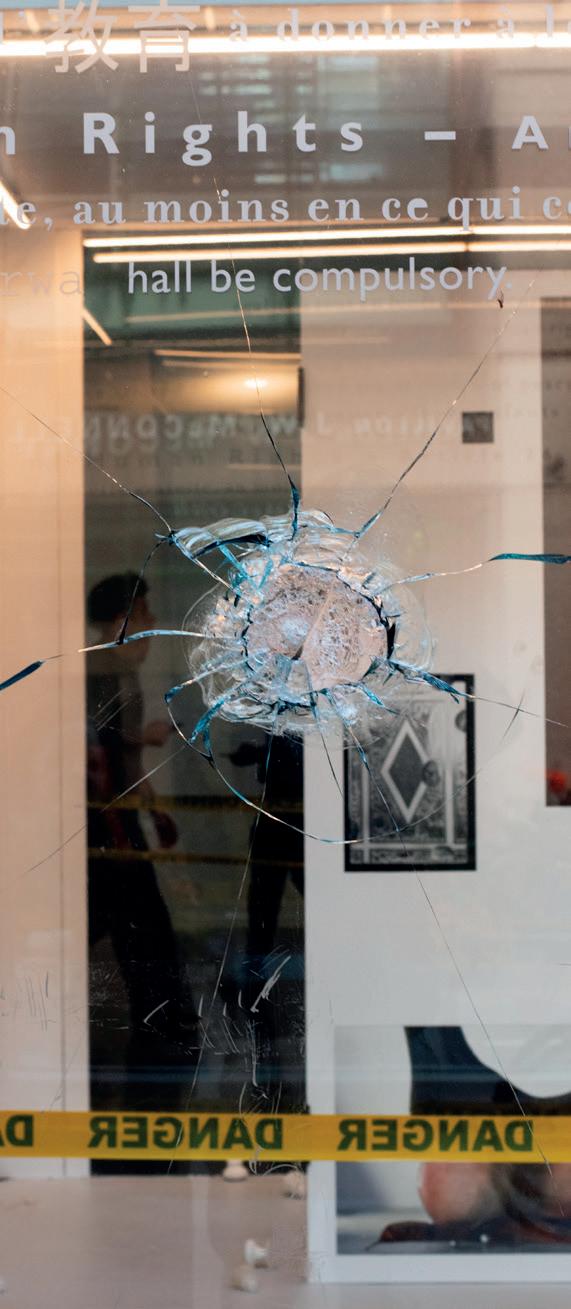
the logistics, by interrupting this middleman, [it] attacks weapons and arms manufacturers across the board.”
Meanwhile, the SPHR member said they feel that—through heightened awareness for the Boycott, Divestment, Sanctions (BDS) movement—successfully pressuring Concordia, McGill and other large Montreal institutions to divest from

Israel is a realistic goal for 2025.
“We’re closer to divestment than ever,” they said. “[ e] BDS movement has grown so much it’s become a [central] topic in the city.” ey added that, in relation to the BDS movement, the next step a er divestment would be an academic boycott of institutions such as Concordia.
“Everyone has the freedom to learn whatever they want, but if it’s at the cost of the occupation of a people, or if it’s at the cost of killing people, then I don’t think that’s academic freedom,” they said.
Still, activists like Ridha believe that certain important accomplishments have already been made since Oct. 7, 2023.
“ e biggest achievement, for me, is awareness—it’s something you can’t lose,” Ridha said. “Over time, people might lose interest in participating in protests or in doing active work for Palestine, but no one is going to go home and forget about the companies to boycott.”
He added that new activists for the Palestinian cause have learned so much more about the movement as a whole over the past year, from the meaning of the ke yeh to the history of Palestinian resistance.
“ is, I think, is the best thing we have achieved since Oct. 7,” Ridha said. “It’s the gaining of knowledge that gives us a foundation for the next time.”

With les from Menna Nayel

Montrealers mobilize for fourth annual Every Child Matters march

Hundreds of Montrealers marched on Sept. 30 to commemorate the Indigenous Survivors and victims of the residential school system in Canada.
People gathered in Mount Royal Park at 1 p.m. and marched to Place Ville Marie in downtown Montreal while chanting phrases such as "Land back” and “No pride in genocide.”
“ e importance of this march is to honour the Survivors of residential schools and how they impacted the Indigenous population,” said Selena Martineau, a protestor and employee at Resilience Montreal. Resilience Montreal is a shelter for Montreal’s unhoused population, who co-organized the march. “We are here to upli them as much as possible and honour what
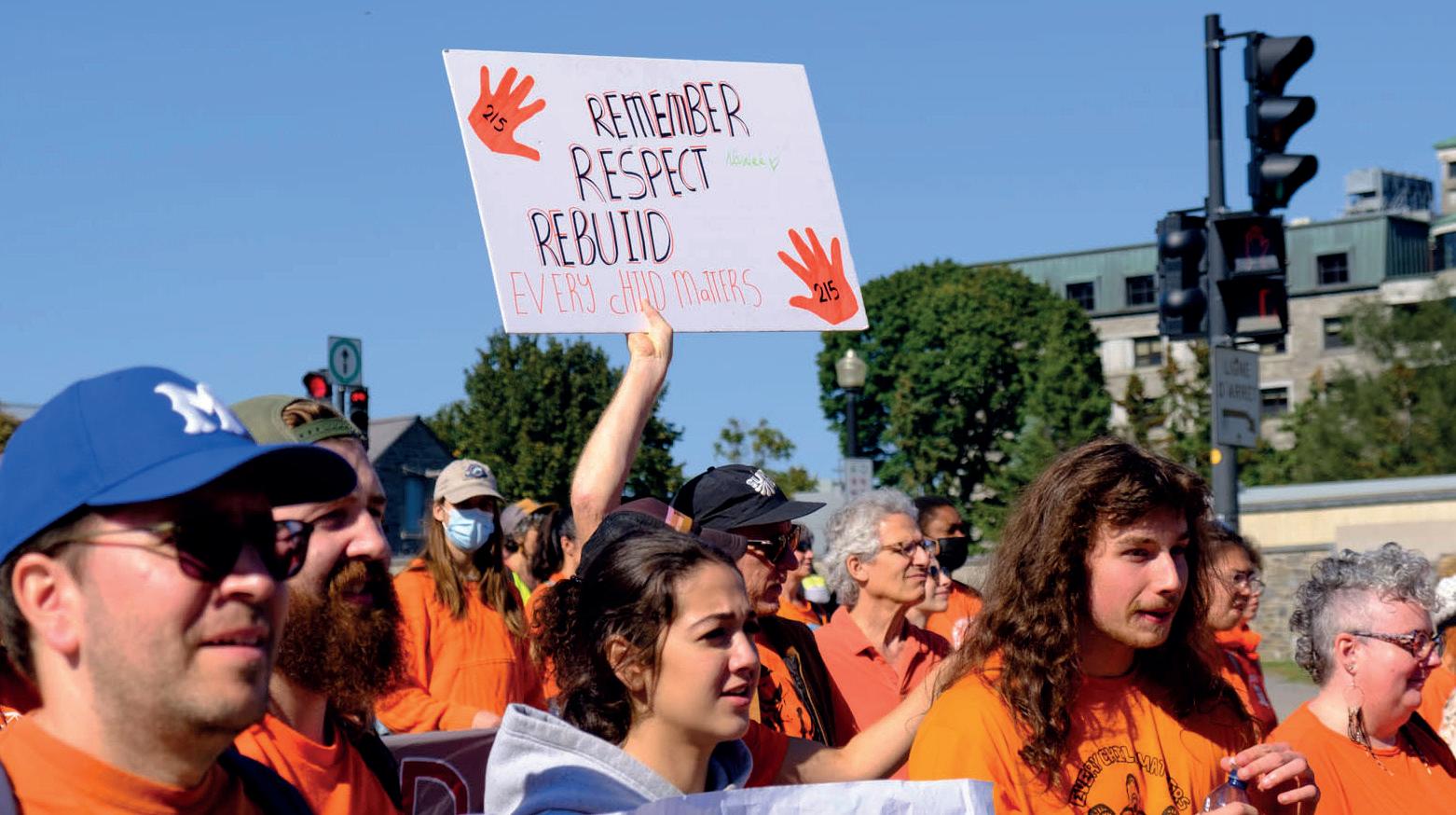
they’ve gone through,” Martineau said. is march was additionally co-organized by the Native Women’s Shelter, a shelter dedicated to providing support and frontline services to Indigenous women and their children.
Nine speakers as well as a residential school Survivor spoke to the crowd preceding the march. Demonstrators marched through Parc Ave., Sherbrooke St. and Mans eld St. to René-Levesque Blvd.
“[Indigenous peoples] gave up their lives, they gave up their language, they gave up their cultures, as lessons for us to take,” said Alex McComber, assistant professor of family medicine at McGill University. “We say never again, this will never happen again to any of our children.”
Philippe Tsaronséré Meilleur is the director of Native Montreal, an organization specializing in o ering services and community connection to Indigenous children and families.
“It’s important for Indigenous people and allies to have a moment to be able to say, through society, that the changes have not already taken place to stop intergenerational harm for Indigenous children,” Meilleur said. “It's important for us to feel that we’re all together to say this message and to allow allies that have moments to also come and support us.”
belongings, including Webstad’s orange shirt, which she never wore again.
According to research conducted by the Save the Children Canada organization, residential schools had a rate of mortality rate between 40 and 60 per cent, and the majority of children experienced severe physical, emotional and sexual abuse.
From the 1830s to 1996, Christian church organizations and the Canadian government forcibly removed children between the ages of 4 and 16 from their family and forced them to attend residential schools in Canada.
e goal was to erase Indigenous cultures and to assimilate Indigenous children into European settler colonialism.
e orange shirt is an emblem, with rich history, which raises awareness of the abuse that Indigenous children had endured in residential schools.
As a girl, Phyllis Webstad was forced to attend a residential school. On her first day, she wore a bright orange shirt given to her by her grandmother. Residential school administrators cut off her hair and stole her
The IHCT, by and for Indigenous people, seeks expansion following increasing demand
Iness Rifay
Andrea Caceres @inessdagoat @andreacxceres

In 2008, the health committee under the Montreal Urban Aboriginal Community Strategy Network held a meeting where the foundations of the Indigenous Health Centre of Tiohtià:ke (IHCT) began to materialize.
Co-founder and executive director of the IHCT, Carrie Martin, attended this meeting, and along with the other members, agreed that there should be no more “patchwork services,” such as Indigenous cultural sensitivity training in mainstream health entities.
“ ose things are not working,” Martin said. “We see it time and time again. We really need self-determination in health, to take back control and make spaces that are safe for Indigenous people to seek healthcare.”
e meeting concluded with a resolution to go big—to start their own health centre, inspired by other Canadian cities, such as Ottawa’s Wabano Centre.
Martin’s drive to see the centre come to life was reinforced by her own experience working in frontline healthcare with Indigenous communities.
“I saw so much discrimination and racism when I was accompanying people to medical appointments, and
[saw] all the access barriers they were experiencing,” she said.
Not having a Régis de l'assurance maladie du Québec (RAMQ) card, not speaking French or English, and not having a status card are all barriers to accessing public health services for the urban Indigenous community.
Fi een years following that meeting, the IHCT o cially opened its doors in August 2023, and it is dedicated to being holistic and barrier-free.
e centre’s services are run in tandem with the community to best meet their demands, a system that brought in the optometry clinic, for instance.
“When the optometry clinic [came] around, a client came to pick up her glasses and she looked so happy when she put them on,” said Alyssa Isaac, the IHCT’s receptionist. “Finding eye care as an Indigenous person isn’t always easy, and it was a good feeling to know that we are helping people here.”
According to Isaac, their clinic days, Wednesdays and ursdays, are very busy and see many clients. e centre’s rapid growth and lack of onsite equipment requires the IHCT to send referrals to their patients.
On the other days of the week, the
IHCT o ers various services such as counselling, spiritual healing sessions and addiction support. e centre grows its own sage and sweetgrass, two traditional Indigenous medicines, and o ers them freely to clientele, alongside tobacco and cedar. All can be used within the waiting room.
Certain IHCT sta can also accompany Indigenous people to other clinics and hospitals around Montreal to advocate for them when needed.
“ e gap between Indigenous and non-Indigenous communities is still very large,” said Sylvain Beaudry, an outreach worker at the IHCT who operates in the domain of sexually-transmitted blood-borne infections.
Beaudry once accompanied an Inuit person to the ER who had trouble being understood and felt disrespected. Beaudry advocated for them, but the person le without getting care a er feeling uncomfortable and unwelcomed.
“It was a hard moment, but reminds me of how important my job is, to be there for them when they can’t advocate for themselves,” said Beaudry. “ e centre is here to remediate this.”
A 2024 study review in Health Promotion and Chronic Disease Preven-
tion in Canada: Research, Policy and Practice found that Indigenous people living in urban spaces expressed the need for culturally sensitive empathic care and the recruitment of Indigenous public healthcare providers. e centre’s current major concern is securing operational funding, which, if granted, could help the IHCT secure its own space and become a hub for holistic healing in Montreal. Currently, the centre is renting out a space in the Queen Elizabeth Health Complex.
“We would love for the government to provide nancial security to keep this operation long-term, but
In Canada, hundreds of unmarked children’s graves have been discovered on the sites of old residential schools in recent years.
According to Kahsennenhawe Sky-Deer, former grand chief of the Mohawk Council of Kahnawà:ke, this is not the only problem. Sky-Deer said the Canadian government o en makes empty promises regarding the needs of Indigenous communities. She stressed how boil advisories and a lack of infrastructure and housing are problems for many First Nations, Métis and Inuit communities.
“We have to do something, we have to get them o their feet to make some real substantial changes to our nations, to our communities,” SkyDeer said. “It shouldn’t be like this in 2024, our people have been through so much.”

there is no concrete action towards granting us that,” Martin said. “No one’s said no, but no one’s said yes, either.”
Martin envisions the IHCT to resemble the Wabano Centre, which has its own building with architecture that alludes to the two rivers in Ottawa, a traditional gathering place for Indigenous people across Ontario. e ceiling is shaped a er a medicine wheel, and each level represents an element: earth, re, water and sky.
“ at is our dream,” Martin added, “to have our own space, that looks Indigenous, that provides everything in its holistic centre.”

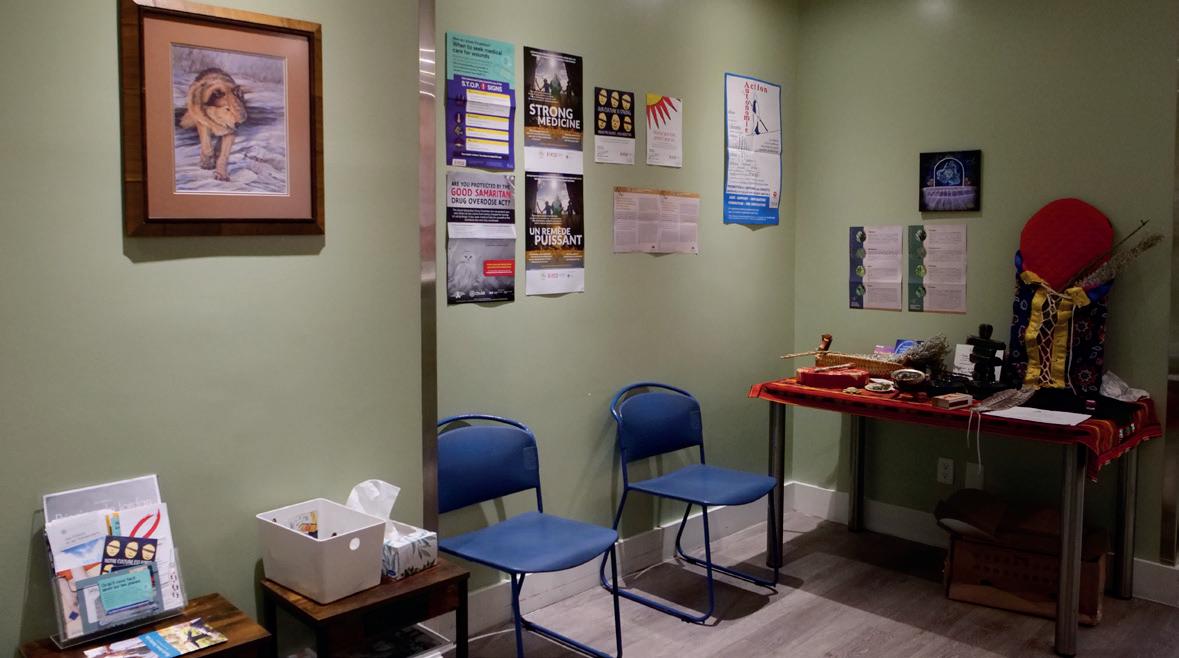





Yasmine Chouman @ya5min.e
In January 2024, Tala Sleiman, 48, was sitting on her couch with her shisha in hand. e TV was playing while her dog ran around the house. One of her sons was cooking in the kitchen, while the other sat across, listening as she spoke about their 2006 trip to Lebanon.
“We went all the way to Syria, afraid [our car] would get bombed,” Sleiman said, “with my 8-monthold with 40-degree fever on one side and my 5-year-old on the other.”
e day was July 12, 2006, when Israeli forces invaded Lebanon with air strikes a er Hezbollah succeeded at a cross-border raid during an ongoing con ict over land. is resulted in what is called the Second Lebanon War.
Sleiman and her family drove from Lebanon towards the Syrian border, avoiding impact holes le in the ground by airstrikes. Cars were being bombed le and right. Beirut’s Ra c Hariri International Airport had been bombed. Civilians had few chances to escape.
Sleiman was one of the few who managed to ee the war in its early stages, returning to Montreal.
“Everybody was scared. It was hell and back,” she said, exhaling the smoke from her shisha.
Sleiman lived in Beirut, Lebanon for most of her life. She grew up there before coming to Montreal around 25 years ago where she raised her kids. During her visit to Lebanon in 2006, she recalled buildings being destroyed, civilians being bombed and people trying to ee. Water and electricity were restricted and there was no cell service.
“ ey emptied the city so they could take it over,” Sleiman said, “like they’ve been [trying to do] to
Palestine for years.”
e con ict ended with a ceasere that was brokered by the United Nations, which came into e ect on Aug. 14, 2006, a er a month of bombings.
Since 1948, a er hundreds of thousands of Palestinians were forced out of their homeland, they have continued ghting for their lives in response to Israel occupying their land and turning cities like Gaza into open-air prisons. As for Lebanon, it has had a strained relationship with Israel since 1982, when it invaded southern Lebanon during the Lebanese Civil War, and with the 2006 Second Lebanon War. is is why many people in the Lebanese community in Montreal have stood in solidarity with Palestine and continue to do so. is was the case when e Link spoke with Sleiman in January, and has become especially true now.
On Sept. 23, Israel red airstrikes across Lebanon. At the time of publication, Israel has killed over 1,000 and wounded at least 6,000 Lebanese people in the attacks, according to Lebanon’s Ministry of Public Health. ese are the heaviest tolls since 2006.
In response, Hezbollah red missiles targeting Israeli military air bases.
From the south of Beqaa to Beirut, hundreds of thousands of residents have been forced to ee, leaving behind their beloved homes, with seemingly nowhere to go. At least 58 towns have been hit with over 1,300 Israeli airstrikes. Before the escalation, Israel had detonated pagers used by Hezbollah, killing 37 and injuring about 3,000 people.
In an interview with CBS, for-
mer CIA Director Leon Panetta called the targeted pager attacks on Lebanon a “form of terrorism.”
Reina Sinno, a Lebanese LaSalle College student, said the media does everything in its power to dehumanize Arabs.
“Western media is good at manipulating,” Sinno said. e 20-yearold student sat on the school oor during her break between classes to talk about how she thinks the media views Arabs. Sinno was born in Montreal but lived in Lebanon for the rst few years of her life until her family moved back to Quebec.
She keeps in contact with her father, who lives in Lebanon. Over the past 11 months, border skirmishes between Hezbollah and Israel have been happening almost daily, with little to no coverage in the media, Sinno said. Her father said he received daily alerts on his phone about incoming missile strikes.
Sinno said the media only portrays Israel bombing Lebanon as a two-time occurrence, referring to the civil war and the 2006 war, when in reality, it has been happening on and o for the last 37 years.
“ ey’re portraying it in a lie,” Sinno said.
On Jan. 3, Israeli forces attacked the Lebanese capital with drone strikes, killing seven people, including Hamas deputy leader Saleh alArouri. While this made some noise in the media for a few days, Israel has not o cially accepted responsibility for the attack. Israel has been known to censor information in the media regarding their actions.
Jean Balka, 61, was not surprised at the avoidance of accountability.
In a phone interview, he alleged, “Habibti, the media is controlled by
Israel. How could you put stu out against yourself?”
Balka is a former ghter in the Lebanese Civil War and fought for the Christian side. ey were called the Lebanese Front and consisted of national Maronites who were against Palestinian militancy in Lebanon. Despite disagreeing with the politics, Balka was forced to ght for the Lebanese Front rather than the Lebanese National Movement.
A er the war, he went to New York and has been living both there and in Montreal since.
He spoke on his recent experience of being an Arab man in the Western World a er the current war broke out. Sometime in early January, Balka was on his way to New York, a drive he has routinely done for the last 33 years, when he was stopped at the border.
“I’m going to ask you some questions,” the man in the uniform said.
“Are you Muslim or Christian?”
He had never been asked this question before.
“Since 9/11, us Arabs are viewed as terrorists and murderers,” Rayane Sakr said as she sipped her co ee at the local Second Cup Cafe in the cold December weather.
Sakr is the child of Lebanese immigrant parents and has felt the struggle of being an Arab-Muslim woman in today’s society. Over the sound of co ee beans getting ground, the 19-year-old said, “We aren’t viewed as humans.”
“ ey have lives, they go to school, they have hopes, they do birthday parties, they get married, they do their makeup, they dance,” she added, her voice trembling.
“ ey are human!”
In January, there were over 250,000 Palestinian refugees in Lebanese refugee camps. Now, with many camps being destroyed, the stateless refugees have the possibility of living in poverty and facing harsh legal discrimination in Lebanon.
Despite the daily fear, many individuals in the Lebanese community are con dent in their nation’s ability to defend itself if the occasion arises.
“Our people, being depressed and struggling for so many years, are ready to die for the cause of Palestine,” Balka said.
e Arab community in Montreal has mobilized for Palestine with protests drawing hundreds to thousands, raising awareness of the situation.
“At the protests, you see so many Lebanese ags because we know we can expect it too,” Sinno said.
Balka believes going to protests in support of the Arab community won’t make a di erence.
“Free Palestine! Free Palestine!” Balka shouted, “Free Palestine, but no one listens!”
“ e more awareness you spread, the more people will try to help and put pressure on foreign governments to go for a cease re,” Sleiman said.
However, spreading awareness both online or in person brings hope to those worried about their communities. Sleiman said the media is nally giving a voice to the Palestinian people and the Arab community.
“You don’t have to carry a gun to be a ghter for a cause,” Sleiman said. “A ghter can be a musician, a writer, a politician, a protester, a donator. Could be anything.”



Cole Cooper
Singer-songwriter Liv Whit eld’s parents found her stage name in an unexpected place. ey adopted “Luella,” the middle name of their wedding o ciant, and added it next to “Nash,” the middle name Whit eld was born with.
“ ey were like, ‘Oh perfect, if our daughter becomes a country artist she can be Luella Nash,’” Whit eld laughs. “I dropped the ‘Nash’ part and I didn’t pursue country but, you know, close enough.”
Instead, Whit eld’s sound spins sonic gossamer––daydream-inducing and bubbly, its low end tinted with the slink of R&B bass—as Luella. Call it swoon-pop, if you will.
“Honestly, I still don’t know what my sound is,” she confesses. “I’m still experimenting with that, and maybe I never will [know].”
Regardless, Luella’s experimentation has amassed an impressive following. Each of the singles from her May sophomore album, Summer Bummer, has racked up over 10,000 Spotify streams. “Never Been in Love,” a highlight from her debut Luna, sits over the 100,000 mark.
Whit eld’s father, Zane Whiteld, owns North of Princess Studios in Kingston, Ontario, where the two recorded and produced both Luella projects. Summer Bummer found the pair experimenting further, with Whit eld in the throes of an experience begging to be written about.
“I got this crash course in rst love and heartbreak, and everything that’s so associated with being a teenager and how messy it can be,” she says. “I felt like it was a goodbye letter to being a girl.”
Zane Whit eld says that, even outside of their personal relationship, working on the record was a very emotional experience.
“ ere were times when I was mixing and editing things, at my desk bawling my eyes out because some of these lyrics hit so hard,” he says. “You can’t help but get goosebumps at certain melodic parts, when they hit in that way. It can be overwhelming. It’ll bring you to tears and make you well up, or happy and ecstatic.”
It’s an intimate project, invitingly so—a neighbour beckoning you
to join their Kodachrome backyard pool party, peach ginger tea in hand. Whit eld cites this beckoning into intimacy as a signi cant part of the recording process, another rung down the rabbit hole of experimentation.
“I think one of my biggest fears as an artist is to collaborate with other people—I like to be in control of most things,” she says.
Nonetheless, Whit eld started bringing songs to her band and working out parts at practice to record later. Without their outside input, distinct musical moments like the disco-stomp bliss of “GOGO” or the betrayed pleas of the guitars on “Radio Silence” might have never come to be.
So Luella has the band. She has the album. She’s got a summer decorated with a suite of festivals and shows across Quebec and Ontario. e hitch? Midway through her tour, she’s going to need a new drummer.
Simon Vandermeulen Kerr is a Concordia University communications student who performs and produces music as Almond Milk. Like Luella, his catalogue is hard to pin under one distinct sound. Witnessing GILGAMESH, his debut, is akin to watching Spiderman discover the range of his powers. e project is a ferocious rush, vulnerable and intoxicated with promise.
It just so happens that Vandermeulen Kerr grew up as Whit eld’s neighbour in Kingston. It just so happens that, a few years ago, he learned to play the drums.
“I don’t remember why I was over at the studio,” Vandermuelen Kerr says. “But Liv and her dad just spontaneously threw it on me.”
A er an uno cial audition at North of Princess, Luella had a new drummer.
“It was a bit of a dice roll because Simon really wouldn’t have called himself a drummer a month and a half ago, short of taking some drum lessons when he was in Grade 6 or whatever,” Zane Whit eld says. “He doesn’t own a drum kit, he didn’t even own drum sticks when he started drumming with us.”
But the Whit elds had a gut feeling that Vandermeulen Kerr’s energy and musicality could bring something special to their show. Within a month he was joining
them on stage, and that gut feeling started to pay o
Promoting and touring Summer Bummer, Vandermeulen Kerr, hard at work on his GILGAMESH follow-up, stumbled into a creative symbiosis.
“It de nitely in uenced my album a lot because I hadn’t even considered playing live drums for it,” he says. “But 3 of the 12 songs have live drums on them.”
On Sept. 27, Almond Milk performed for POP Montréal at Quai des brumes. His set largely consisted of unreleased material from Simon and the Pop Curse., his album due on Jan. 3. ere was something di erent about this show; you could feel it in the bluster of the crowd’s revelry. Vandermeulen Kerr was discovering re, or at least something brand new. Nimble and insistent, his vocals rode the slipstream between pillars of bass that seemed four-dimensional. If GILGAMESH
was the sound of a hero discovering his abilities, this was the sound of him putting them to use.
Midway through his set, Whiteld joined Vandermeulen Kerr onstage to perform long-standing live staple “Too Late,” a standout in both their catalogues.
“I’ll spin the block for you, I’m Rubik’s. I’ve got some work to do, I knew this,” sang Vandermeulen Kerr in “Too Late,” a taut track ush with avian Luella harmonies. roughout the performance, one thing reverberated—Vandermeulen Kerr was taking Almond Milk and his audience somewhere previously undiscovered.
“GILGAMESH, almost none of it was personal experience,” he explains. “It was all my feelings, but using imaginary scenarios and characters to express them. But [Simon and the Pop Curse.] is very literal, drawing from what’s happened to me.”
During Kerr’s performance, this


was never more clear than on the album’s centrepiece “Pine St.”
“We knew the truth would hurt us, so we hold on to a lie,” is a line that’s anything but imaginary. It’s real in a way that might seem out of place at a packed bar on a Friday night; but, if Almond Milk was diving into the deep end, this crowd was willing to follow him.
Vandermeulen Kerr and Zane Whit eld joined Luella onstage later that night to round out her sound, her voice an easy injection into their thrumming pocket. Sometimes it just feels good to groove, and a set full of songs like “Peach Ginger Tea” is a reminder of that.
roughout her set, Whiteld would catch Vandermeulen Kerr’s eyes across the stage. ere they were—two artists with wildly di erent sounds, their feelings tattooed to their sleeves and the wide world in front of them. But in those moments, they were just two friends making music together.




For fans of jazz, world music or contemporary rhythms, this year’s MUZ festival will take you on a journey of meandering soundscapes from Oct. 3 to Oct. 6 at Montreal’s Quartiers des Spectacles.
e festival is presented by Vision Diversité, an organization founded 18 years ago by artistic director Paméla Kamar and her mother, Aida Kamar.
Seventeen years before the organization’s founding, Kamar’s family immigrated to Montreal from Lebanon. Her mother worked with Francophone ministries upon arrival, helping immigrants from all over the world integrate into Quebec society. e mother-daughter duo soon recognized there were many visionary immigrants without opportunities to ourish.
“ ere were a lot of people who were talented, but there was no place for them,” the younger Kamar said. “We realized that we had a place for that and there was a credibility with our path.”
Kamar and her mother decided to push what she calls “a courant of mixed music” into Montreal’s artistic sphere.
“We decided to start [with] little events,” Kamar added. “We had to do it step by step because everybody wasn't really ready for [mixed music].”
Kamar is driven to help artists nd their paths, build their momentum and continue to grow.
“We’ve helped a few hundred artists to take their place [through
MUZ],” Kamar said, naming Dominique Fils-Aimé, a Montreal-based singer-songwriter who has won two JUNO awards, among others.
MUZ’s 14th edition will present 17 groups with diverse backgrounds and rich in uences. Among the headliners kicking o the festival on Oct. 3 is Maracujá, a four-member ensemble self-described as “the undisputed standard-bearer for Brazilian music in Montreal."
Elie Haroun, Maracujá’s singer, rst discovered Brazilian music through the band’s drummer, Sacha Daoud, almost 30 years ago.
“I fell in love with it because it just has a natural happiness to it, from as much the melody standpoint as the rhythm standpoint,” Haroun said. “It's just a type of music that is universally appreciated, universally loved.”
Maracujá takes a bossa nova, samba approach to the wide umbrella of Brazilian music.
“[Our music] is very tied to the sound of the ‘60s and ‘70s, but has a very strong prominent jazz in uence because of our pianist,” Haroun said. “And it’s never gone out of style.”
Haroun believes that playing in a festival like MUZ, which is specifically created to showcase cross-cultural music, means that Maracujá’s sound is less diluted than in a larger festival like the Montreal International Jazz Festival.
“It gives us a chance to put more value on the kind of music that we do,” Haroun said.
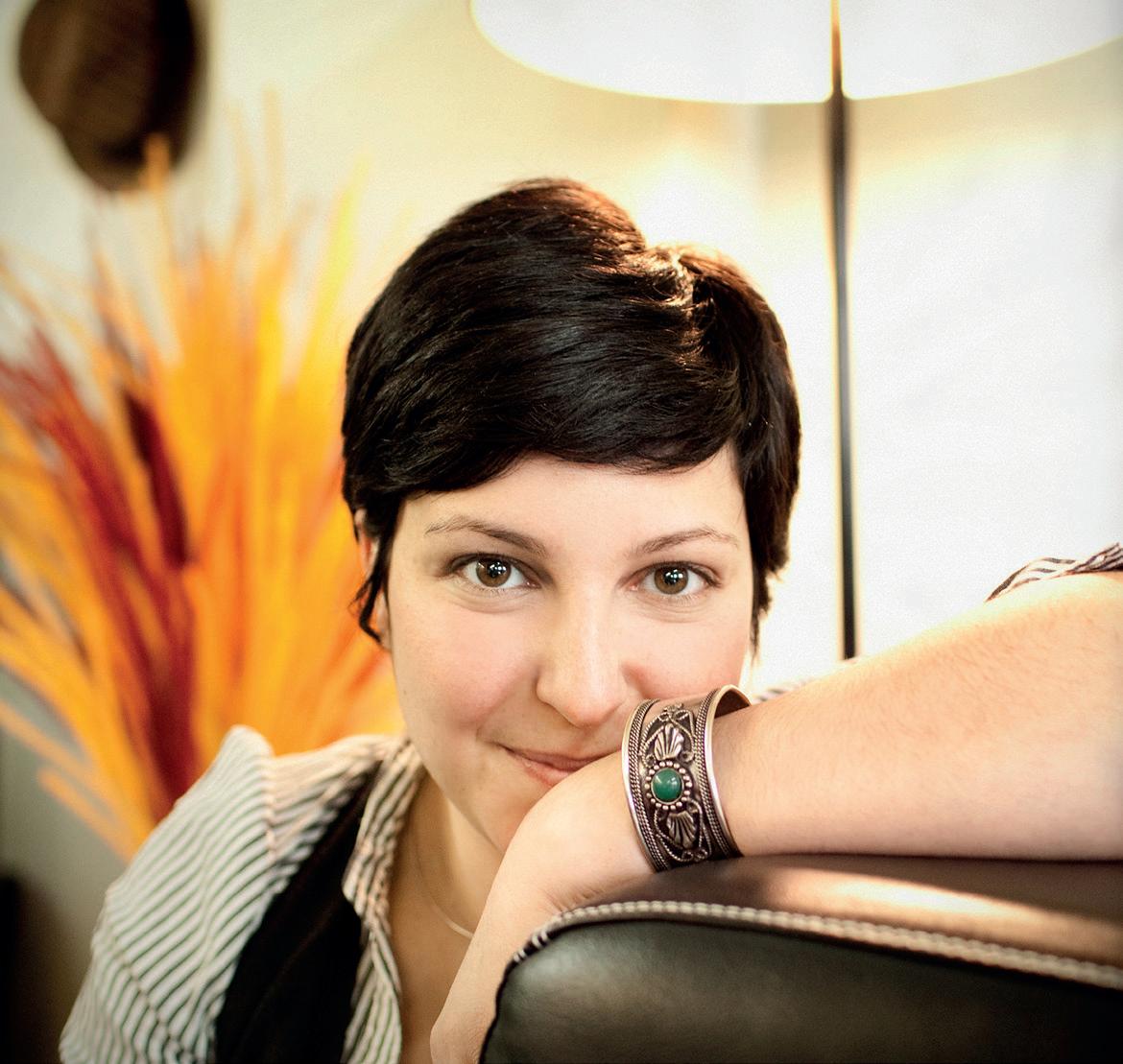
“I really feel like it's a festival that revolves around helping the artists and [...] putting the artists at the forefront,” added Daoud, who has performed at MUZ before as a sideman for other projects.
Another aspect that makes MUZ unique is its short set times of around 20 to 25 minutes, compared to a festival where artists play hourlong sets, according to Daoud.
“You have to bring out the best of what you do and have, that will have the greatest impact,” Daoud said. “It brings another kind of thought process and a way of building your show for that kind of event. And I think the public is lucky because it's [...] able to taste a bit of di erent artists in one evening.”
“Psychomusical tapas,” Haroun interjected, both he and Daoud laughing.
Maracujá is inspired by traditional Brazilian repertoire, as it is inspired by what Daoud describes as “a great musical diaspora” in Montreal.
“Brazil is such a big country, and there's more than 150 rhythms in Brazil. If somebody comes from southern Brazil, his tradition and his ears are completely attuned in a di erent way than somebody that comes from the north or Amazonia,” Daoud said. “[It] in uences the variety of rhythms and interpretations of Brazilian music that exist.”
Maracujá hopes to embody a sense of pure joy, kinship and communion in their performance on Oct. 3.
“[We have a] sixth sense of how to communicate amongst [each other],” Daoud said. “I think that's always something very strong that transcends the stage and really reaches the public, because I feel like people can really have a very strong sense of that kinship, and [...] it's infectious.”
“If music is not about people,” added Haroun, “if music is not about getting together and having some sort of community together, then I don't know what music is for.”
Haroun and Daoud are excited to see MUZ’s other acts and mingle with people who are in the same vein of music as themselves.
“It's always great to be inspired by other people,” Daoud said.
Among the other artists performing will be Carine au Micro, who will be on stage Oct. 5 for the second time with MUZ—the rst being in 2015 at the beginning of her music career.


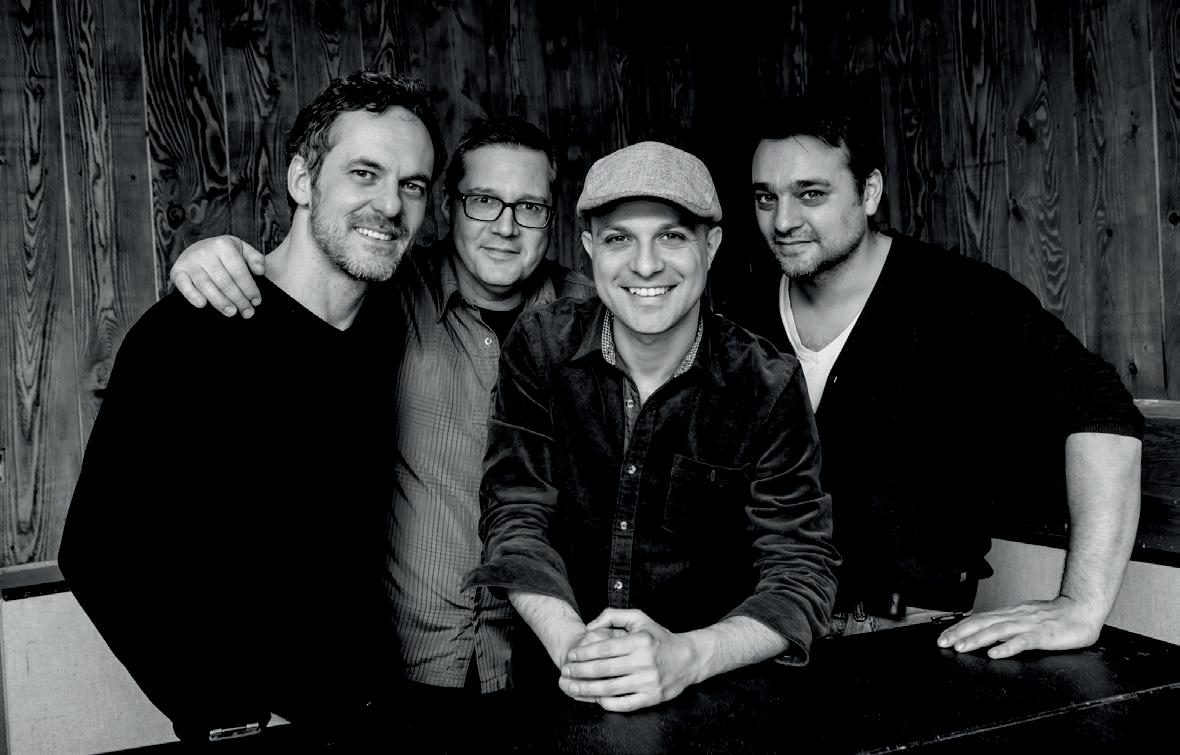
“I nd in this girl a really beautiful voice,” Kamar said, emphasizing her words. “Really, you should hear her.”
Carine au Micro is from Benin, in West Africa. Her roots are integral to her music, manifesting in its rhythms and language.
“We are not that many artists from that part of the world,” she said. “My music is a mix of di erent styles. It's a mix of gospel—because in gospel, you have a certain strength in the voice. And then I mixed that with jazz, because my parents were very interested in jazz. [...] And then I mixed that with my African origin.”
Carine au Micro’s onstage performance will comprise only four people and two instruments—the acoustic guitar and a traditional African percussion instrument called the calebasse. She will be joined by a deaf artist who will interpret her singing into sign language in real-time.
“It's just a try,” said Carine au Micro, who will be incorporating sign language into her show for the rst time. “If it works, I want to keep proposing a show like that. [...] For me, it's important to put di erent people together.”
MUZ is an immersion of musical worlds, including but not limited to Brazilian music, African music and Carnatic music from southern India, along with instrumentals, guitars, amenco and ancestral hand percussion. It is a festival founded on rhythmic diversity, blending the modern with the traditional—a true celebration of musical fusion.
“Just during a night, you can do a trip all over the world, but from local artists who are not well known [to] the large public,” Kamar said. “During an evening, you have like six universes. at's what makes the beauty of these evenings.”

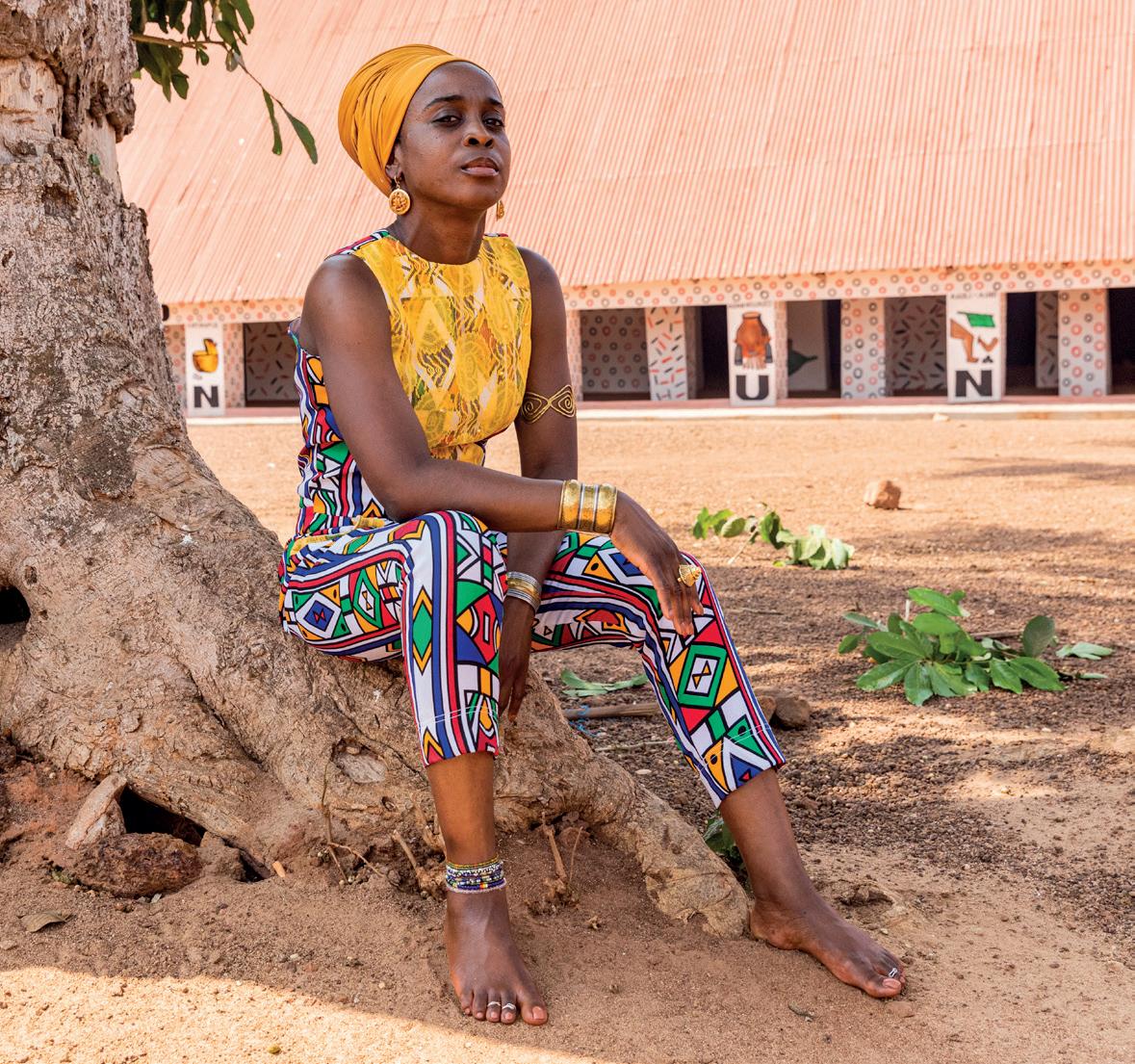

in the pink upholstered armchair that rests along the base of Giovanni Caboto’s monument. He stands atop his history in relief.
one hand holding empirical authority, the other raised eternally against the sunto shield it from his gaze.
plastic crinkles as reflective vests clean the park. it is here in Cabot Square where the summer air has never smelt so unsweet and people sleep forever in plastic covers on concrete beds.
A man in a faded crop top, strapped with a small pink guitar, sings hoarsely to unlistening pigeons.
near the impotent drinking fountain a woman wearing headphones speaks with strangers and leaves 20 dollars richer.
Oh, Johnyou are far from Italy, and many miles from India still. I pity the object, that became you.
a plastic web tangles two trees. condos under construction will surely have breathtaking views.
a photographer spots the empty armchairlines up the shot. steals from it, too easilya moment of poetry.
Where did you go, Caboto?
Are you trapped inside this bronze coffin?
Some say you were lost at sea, swallowed by a storm, as if the Earth herself rejected your mission.
a lump of a man slumps down beside me and starts to read his grocery receipt.

near the chair
a couple drop their belongings, giggling, they watch each other. one walks away making pigeons flysoon the other lover follows.
an older man with a vest, a Pepsi, and portable radio playing French hip-hop, dances with Giovanni, running his fingers along the stony base. the armchair, carefully ignored.
cops pass byless interested in the indigenous disposition of abandoned things.
the couple returns to the statue with languor in the flaccid afternoon light.
I’m pretty sure the guy next to me now is eating something smelling of garlic and fat out of a plastic bag.
Why do you search the horizon still?
The last ships set sail long ago turn your gaze to the ground these are your people now. there is nothing left to be discovered here, and the only worlds that have yet to be conquered are the ones inside of us.
nobody will sit in Caboto’s chair.


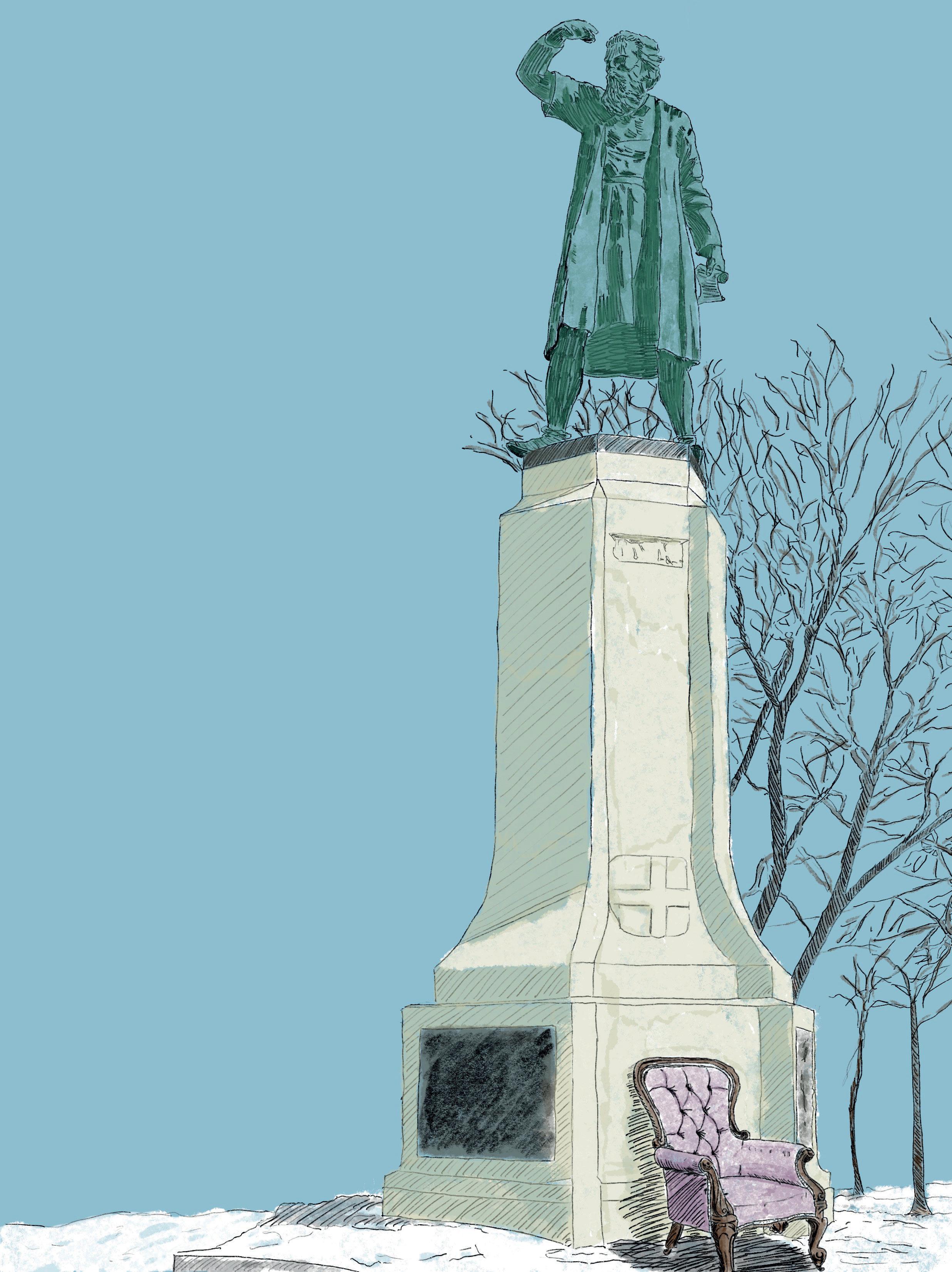
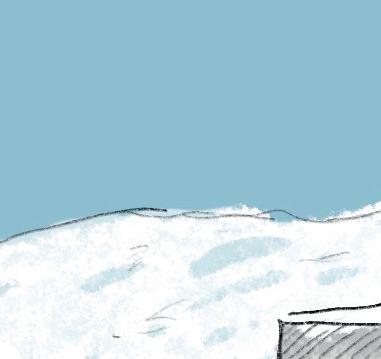



Olwyn Stowe
Two by Two, Together, one of the latest exhibitions at the Montreal Museum of Fine Arts (MMFA), invites viewers to ask questions and participate in the dialogue between pieces on display.
Two by Two, Together explores themes of colonization, the human gure, religion and landscape. Most of the artworks are displayed in groupings, typically complementary pair-
ings with shared themes.
“ e idea was really to limit the selection to works that were linked, whether [...] according to the subject or their formal attributes—time period, function and materials,” said Iris Amizlev, curator of Two by Two, Together. “I'm hoping that viewers will be able to participate and nd their own conversations between the works, and wonder why they were
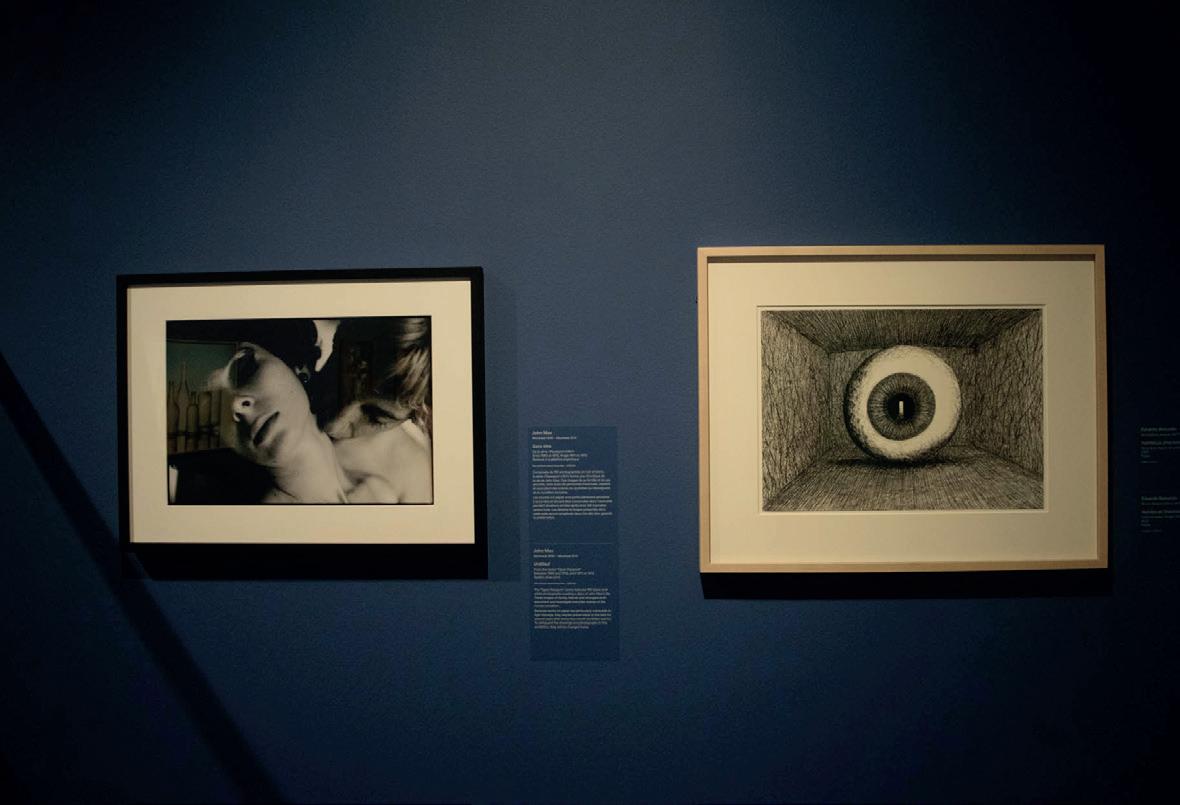

put together.”
e exhibition features works acquired over the last ve years, from archaeological pieces to photographs, including work by artists from historically marginalized and underrepresented communities.
Commentary from a broad range of artists is included—Lawrence Paul Yuxweluptun, Wanda Koop and Stanley Février, to name a few.
“It's fascinating to see that years a er years, the artists use the same subject, but always try to nd something new to say about those subjects,” said Philippe Gervais, an art history teacher in Montreal who attended the exhibit at the MMFA on Sept. 21.
e exhibition re ects the MMFA’s collecting practices, which aim to diversify its collection.
“ ere [have] been marginalized communities for a very long time in the art world,” Amizlev said. “Acquisitions have been very much focused on correcting those erasures. [...] We've been making a conscious e ort to buy more works by women, people of color, LGBTQ+ [artists].”
e exhibition’s unique presentation not only highlights these acquisitions but also encourages visitors to ask deeper questions. As they uncover commonalities and contrasts between the artworks, the exhibition fosters dialogue around both the art and the lives of the artists.
“What did their house look like? What did their studio look like?” asked Jadie Hill, a Montreal-based
artist who attended the exhibit on Sept. 21. “Were they deemed a signi cant person in society before they made it into this room, you know? Are they still alive? Did they even have any recognition of their skills or intellect before they made it into this room?”
Two by Two, Together is on display at the MMFA until Oct. 5. Admission is free for those under the age of 25.

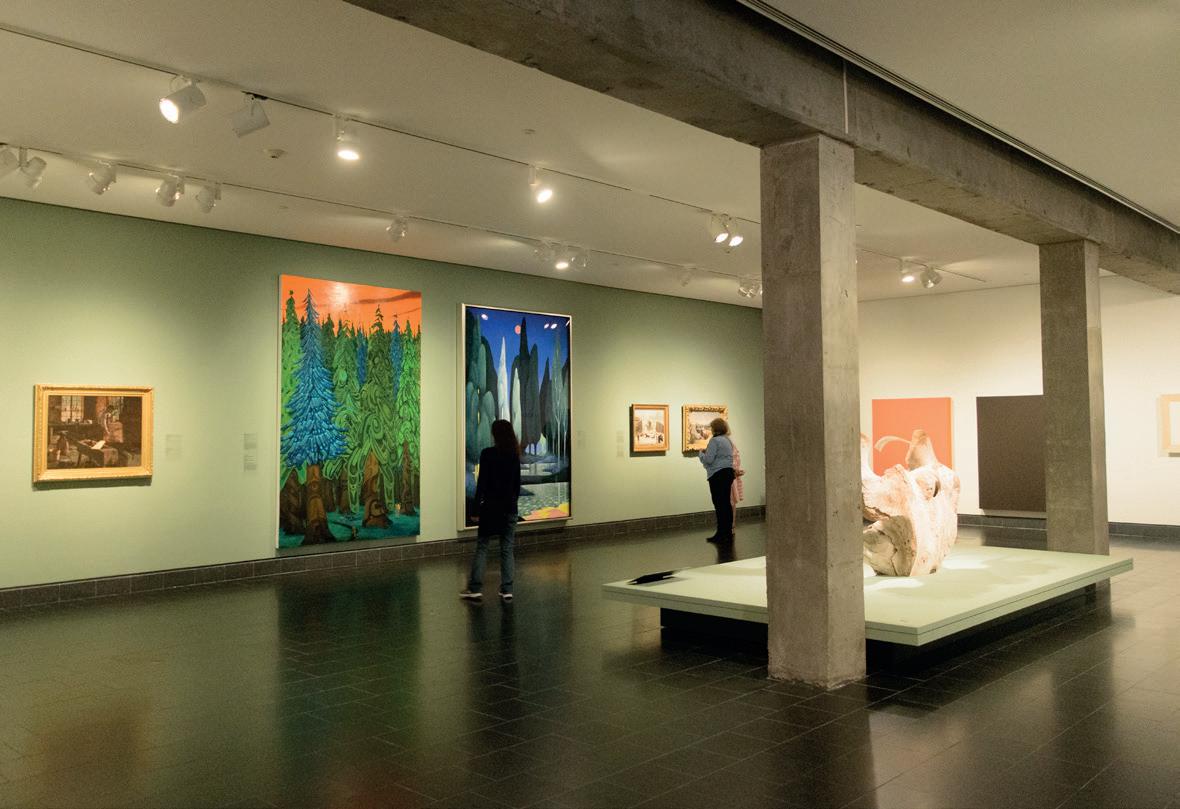
She becomes the third Stinger selected for the U Sports initiative since 2021
Jared Lackman-Mincoff @jared_lm02
Alexandra Boulanger, Emmy Fecteau and now Jessymaude Drapeau.
Concordia Stingers women’s hockey forward Drapeau is one of the nine players country-wide who will take part in the Creating Coaches program, U Sports announced on Sept. 19.
“It’s a great opportunity,” Drapeau said. “ ere aren’t a lot of people who have access to this training, so I’m really happy to have been chosen.” e program runs for two years. Drapeau will receive training through the end of the 2025-26 season. Stingers head coach Julie Chu and associate head coach Caroline Ouellette approached Drapeau about applying for the program over the summer.
“[Drapeau] has continually shown how dedicated she can be […] as a student-athlete and I have no doubt that she will be that as a coach,” Chu said.
Drapeau becomes the third Concordia Stinger selected for the program since its inception in 2021. Boulanger was included in the program’s

inaugural cohort in 2021, and is now an assistant coach at Bishop’s University. Fecteau was part of the 2023 cohort and was selected 31st overall by New York in the 2024 Professional Women’s Hockey League dra .
“ e fact that we’ve been able to have three really great people and candidates within our program that are interested in coaching and really want to put that extra time and e ort into it, it’s really special,” Chu said. e program usually selects eight women’s hockey players from across Canada, two from each of the four conferences. However this year, nine players were selected, with Drapeau being the only representative from the Réseau du sport étudiant du Québec.
“By stepping into coaching roles, they are helping to build a stronger, more inclusive sports community across Canada,” U Sports chief executive o cer Pierre Arsenault said in the Sept. 19 press release.
Drapeau will undergo her training with the under-13 Lac St-Louis
Warriors, a peewee double-A girls’ team in Montreal. On top of her student-athlete schedule and regular meetings with other members of the program, Drapeau’s responsibilities with the Warriors include attending one practice per week and being behind the bench for at least three games per month.
“[Creating Coaches] knows that we’re university athletes,” Drapeau said. “School and our hockey come before this, so they try to be accom-
modating to our schedules.” Drapeau has been coaching since she was in CEGEP. She coached midget under-18 and she coaches during Concordia’s summer camps alongside Ouellette.
Chu said she is excited that Drapeau’s selection will give more exposure to the Stingers program, and that it will also help her better understand the many aspects of coaching and how the game is di erent from a peewee level up to the university level.
“[Drapeau]’s going to love it, and she’s going to be very excited to be able to grow in those capacities,” Chu said.
Drapeau said she is looking forward to being an example for young athletes to follow, on top of sharpening her own abilities.
“I’ve started to understand more in recent years that the more women role models they have, the more young girls will want to stay [in hockey],” Drapeau said. “ ey’re going to follow your example as well.”



Concordia’s men’s soccer team wins four of its first five games



Dusty Goldberg @dusty71goldberg
Fans of Stingers soccer, rejoice!
Concordia’s men’s team has come ying out of the starting gate this season. Despite signi cant changes to the roster construction, the team looks as good as ever.
e Stingers’ season started on Sept. 1, with an unfortunate 1-0 opening loss to Université du Québec à Trois-Rivières. e boys rallied the following week, crushing Université Laval in a 3-0 home win. ey have since become a force to be reckoned with, as the blowout was the rst in a string of four consecutive wins for the team.
“We’re pretty humble about it, it’s played and earned on the eld, right?” said new head coach Kouyabe Ignegongba. “We do believe in who we are, as players, as a team, we do think we have all the tools to be successful. Now, we still have to show up and earn that victory.”
Although it’s his rst year as the Stingers’ head coach, Ignegongba is no stranger to the world of Quebec soccer, or its responsibilities.
“I've been involved in Soccer Québec professionally for the better part of 10 years,” Ignegongba said. “I’m the general manager in the club of a semi-pro team.”
On top of being a former player and member of the Association de Soccer de Blainville’s front o ce, he’s spent the last seven years as an
assistant to former head coach Greg Sutton.
When Sutton was promoted to Concordia’s director of soccer, Ignegongba was promoted to head coach.
“I think the most important thing that Greg brought to the place,” Ignegongba said, “is to give the opportunity for everybody to contribute within the setup.”
e new head coach said he wants to build on this by making sure his Stingers are comfortable voicing their opinions to the sta , and by catering to the specialized needs of each player.
“ e one thing […] was to make everything player-centric,” Ignegongba said. “What can we do to give the best environment for each player [...] without forgetting the notion of the team is above everything?”
Ignegongba isn’t the only veteran stepping into a leadership role.
Lundon Durand Browne, in his second year with the Stingers, recently earned the title of team captain. Ignegongba says the captain selection process was simple.
“It’s a process that can vary from one year to another,” Ignegongba said. “ is year, Lundon picked himself. He was the natural conclusion.”
Like Ignegongba, Browne is no novice to the game. He started playing at Impact Soccer Academy
at age 14, where he was given the number 72. As years passed and Browne improved, his number shrank. By the end of his time at Impact, he had earned the number three, which he still wears today.
“It’s a constant reminder of all the work I did, and for me to maintain this number, I need to keep putting in the work,” Browne said.
On Sept. 20, he scored his rst o cial goal as a Stinger in the rematch against Unversité Laval. e 23-year-old captain said that not much has changed for him in the new role. e only major addition to his responsibilities is to help relay concerns and criticisms from the players to the coaching sta . is year's team has a total of 29 players on the roster, nine of whom are rst-year players. One of these rookies, Michael Valentino Santella, made his presence felt early on this season. On Sept. 13, the men’s soccer squad played their rst away game of the season at Université de Montréal. ings started to look scary, on Friday the 13th no less, with neither team able to score. at is, until Santella ripped a shot on goal to give the maroon and gold a 1-0 lead. e score would not change for the remainder of the game, and Santella walked o the pitch with the MVP of the match award.
“I just want to help my team
win. No matter what. Assists, goals or the third pass to make that goal, I just want to win,” Santella said. “ at’s my biggest thing.”
Being a rookie comes with many challenges, including those that come o the eld. On top of attending the two games and four practices the team holds every week, Santella is a full-time soware engineering student.
“You have to be really responsible,” he said.
To stay on top of his studies, he said he keeps a calendar with detailed time slots. Even the little pockets of free time he gets are not wasted.
“I feel guilty,” Santella admitted, “so if I have free time, I’m gonna go on my books right away. Or try to nish an assignment.”
e role that the veterans play is vital to the success of any squad, especially this one—a team with so many rst-year players. Santella, who played for AS Blainville before joining the Stingers, said the camaraderie of the seasoned Stingers has helped all the rookies adapt with ease.
“ e team has worked so hard.
e new rookies, we feel at home,” Santella said. “ e vets really took us under their wing, so once I came in, I felt at home.”
One might think that a group composed of so many newbies would have a rockier start to the

season, but Ignegongba said it’s a testament to his returning players.
“It’s a simple consequence of the veterans setting the bar. It’s easier to come in and know what’s expected of you, the level of performance that’s expected when you have guys come in and lead by example,” he said. “ ey’ve been through the trials and tribulations, they’ve been through the playo losses, and understand a lot better what the process is going into it.”
Two thirds of the way through the season, the team has amassed four wins, three losses and one draw, good enough for the second seed in the Réseau du sport étudiant du Québec men's soccer conference.
To most, this would be a solid record, but Browne stated that the team isn't satis ed. Ignegongba doesn’t like to put de nitive goals on the season, like making the playo s or winning a certain number of games.
“We treat every team that we play like the biggest threat to our season. We take it one game at a time, we prepare the same way, but with the nuances we need for everything,” Ignegongba said. “We’re living in the moment, enjoying our football and enjoying our season.” e Stingers are 8 games into their 12-game regular season. Playo s start Oct. 25.

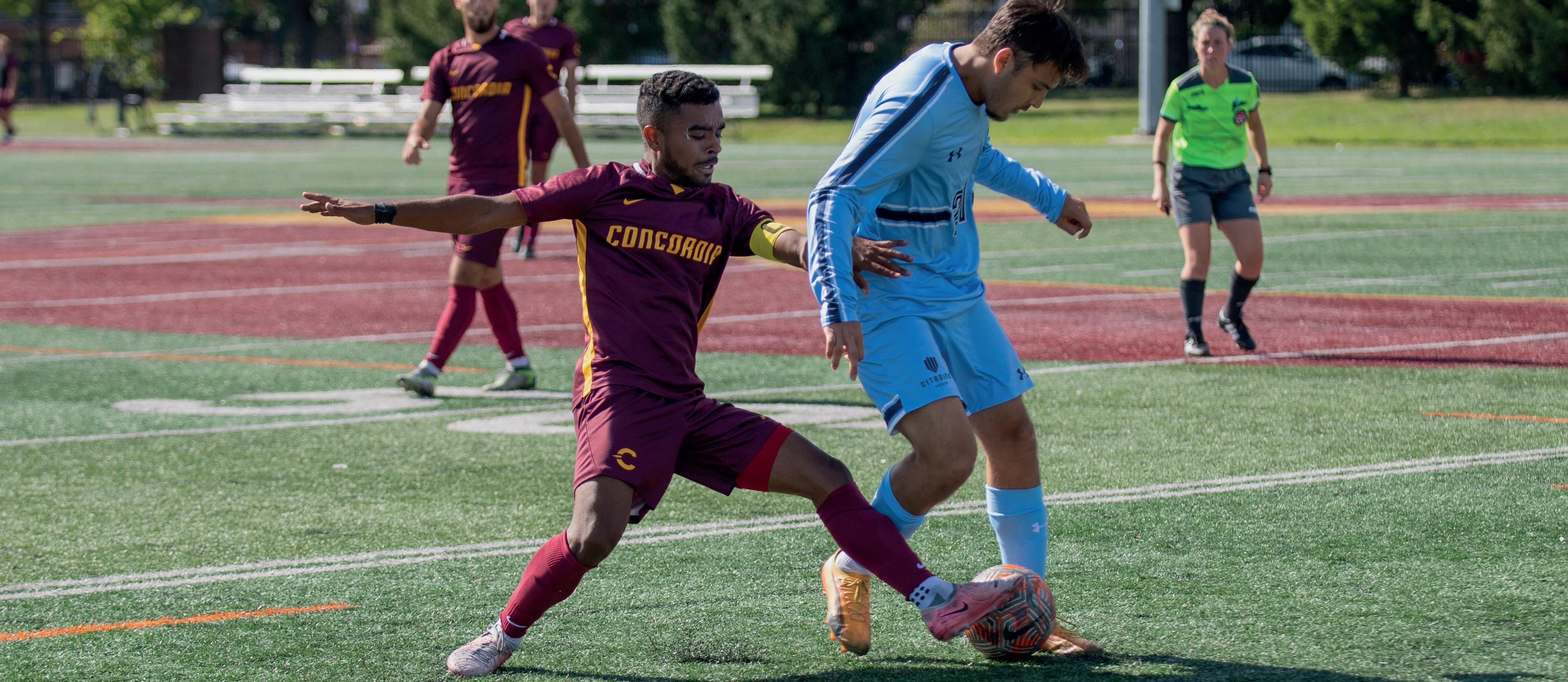

Conor Tomalty

@conor_tomalty
Since 1995, the Concordia Stingers’ baseball program has been coached by Howard (Howie) Schwartz. Heading into the spring of this year, however, the bench boss made a decision regarding the future of the program.
“I’m thinking about me getting on and seeing what I can do and what’s the future of my program," Schwartz said.
“Because if I leave the program, if I go, there’s no more program. Nobody’s going to be able to keep the thing running.”
Schwartz brought on Casey Auerbach, formerly the head coach at McGill University. Schwartz has known the Auerbach family for over 30 years, but rst met the new skipper back during his time with the Montreal Expos, when Auerbach was 10 years old and participating at a youth training camp.
Auerbach has spent the majority of his university coaching tenure on a rival team. A er his years of playing university ball at McGill, he joined their coaching sta in 2014. He was part of the program for their ve straight Canadian College World Series titles. Ten years later, he swapped the Redbirds uniform for maroon and gold.
Despite Auerbach hailing from the rival coaching sta , Schwartz and he would talk about the game at length. is bond, according to Auerbach, facilitated the transition into Concordia.
“It was pretty smooth, all things considered,” Auerbach said. “I was attered that Howie [Schwartz] approached me with the idea and then spoke to some of our assistant coaches, and they were up for the challenge.”
Another factor which led to Auerbach joining the Stingers was his ve-year outlook. According to Schwartz, Auerbach saw the Redbirds moving in a di erent direction compared to his fellow coaches, and this interfered with him being able to execute that vision.
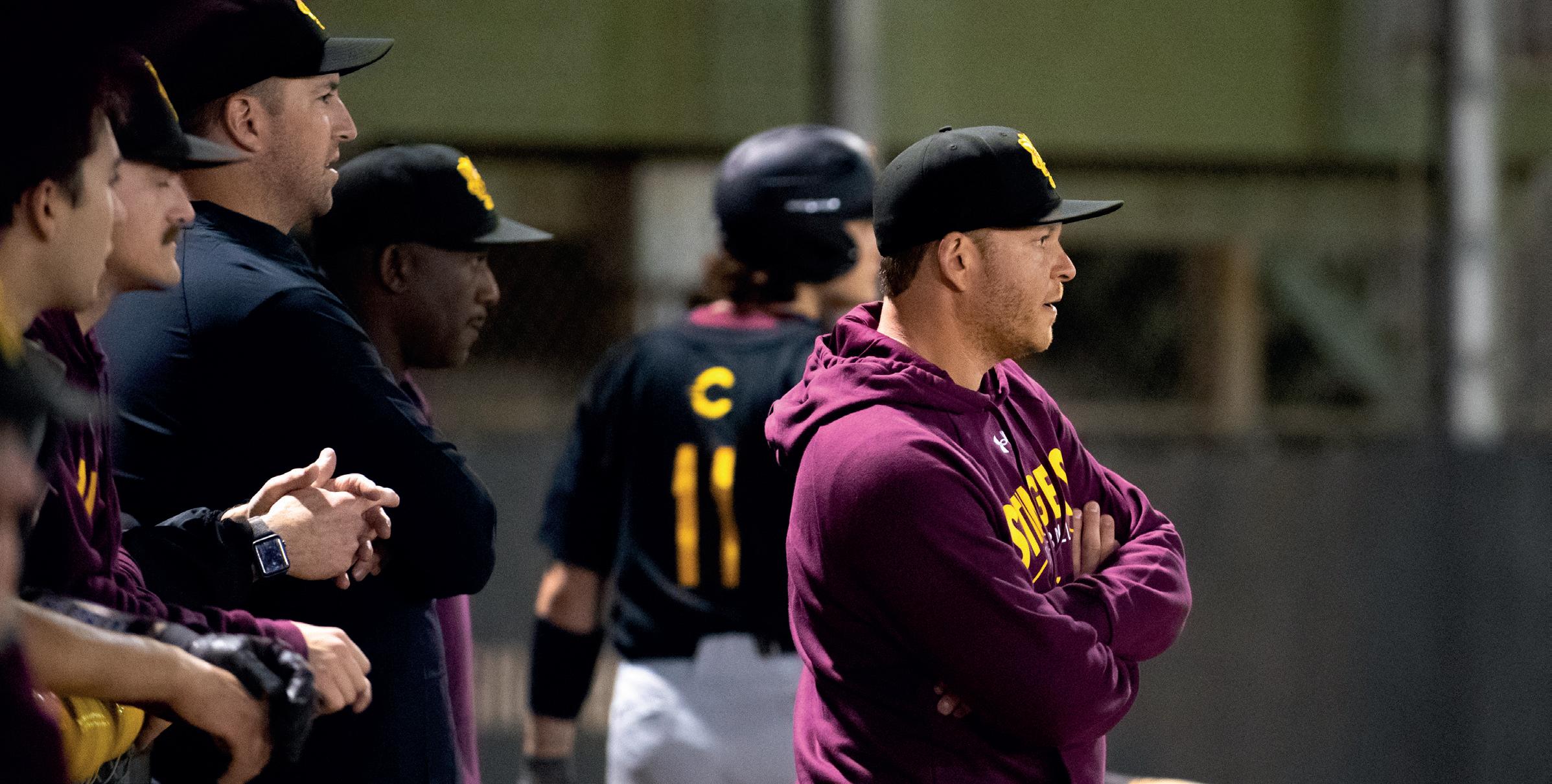
By joining Concordia, Auerbach can now execute his new plan for the Stingers.
“A lot of it is o the eld,” he said. “Re-engaging alumni, getting parents more involved and getting the pride and the passion back that the program deserves [...] It’s not just a six to eight-week commitment anymore. It’s going to be a full-year program that we’re running here.”
Strategy and foresight aside, with a change in the dugout comes a new approach. Auerbach described his approach as disciplined and structured.
“We have a high standard for players and the quicker they start to learn and are coachable, the more we can throw into the system,” Auerbach said.
Auerbach’s approach makes sense considering how raw the team is. Many players are not only adjusting to university-level competition, but are additionally getting acclimated to playing di erent positions on the eld.
e smaller roster impacts line-
up decisions as well. It’s no surprise to see a player on the mound in one game take up space in the in eld or out eld in the next appearance.
Players on the team don’t see a big di erence in how the program is run, despite the coaching change and the smaller roster.
“As a vet, who, you know, feels that they had a comfortable situation going, there’s an aware approach to a sort of cultural shock that might come,” said in elder Bobby Fraser, who has been part of the team for four years. “But, we’re pleased to see that a lot of the old guard stayed on and the new sta is here and they’re not working as two di erent factions.”
In his inaugural year with the Stingers, Auerbach’s squad amassed a record of 6-11 in overall play and a record of 5-7 in conference play. eir record places Concordia third in the conference, and despite being under .500, the team is trying to improve their level of competitiveness on the eld.
“One thing I can’t underesti-
mate is how much everybody loves Howie, and how much Howie loves everybody,” Fraser said. “It should be noted that it’s not that we didn’t have competitive insight, but we’re de nitely steering in a more speci ed direction.”
While he is no longer the bench boss, Schwartz remains a vital member of the sta . Now in a general manager role, it’s allowed him to work one-on-one with players.
A former psychologist with the Montreal Expos, Schwartz helps the team with the mental side of the game, and works to improve performance by talking through issues a given teammate is having on the eld.
With a general manager and head coach in place, it allowed Schwartz to prioritize his workload.
“For me personally, it means I don’t have to worry when I’m focusing on something, [rather than] going le and right with my head to see if anything else is being covered,” Schwartz said. He added that Auerbach brought in
" It’s not just a six to eight-week commitment anymore. It’s going to be a full-year program that we’re running here."
-Casey Auerbach, Stingers baseball coach
people who have strong fundraising ideas which has also helped tremendously.
On paper, it may seem as though Schwartz is content in his new role, but there is a long thought process into giving up a position he’s held for 30 years.
“I loved every second of being the head coach,” Schwartz said. “It took me a couple of weeks to sort of get my head around giving it up.”
Schwartz noted that the change feels signi cant.
“It’s less and less so as the year went on, but it’s not a question. It was my life for 30 years [...] But I’m very happy because the program is bigger than anything in my ego,” he said with a laugh.
Schwartz knows Auerbach is the right man for the job, and takes pride in the direction the program is heading.
“Even though Casey wore the wrong colours across the eld, he was still a part of my family. My baseball family,” Schwartz said. e third place spot means that the Stingers will be matched up against the Redbirds in the opening round of the provincial playo s. e Stingers are 1-3 in games against McGill this campaign, the team that eliminated them last season. Auerbach will face his former team in a compelling cross-town rivalry series.


Anaïssa Dauphin @anaissadauphin

Whendid it become so popular to hate Haitians?
Or, more pointedly, when will the Haitian hate train nally come to a halt?
e stigma against Haitians has persisted for centuries. In the ‘70s, Haitians immigrated in great numbers to the U.S. as they escaped the François Duvalier dictatorship. e stigma stems from pure xenophobia and racism. e discrimination was so harsh at times that in October 1984, high school student Phede Eugene killed himself, ashamed of his Haitian heritage. Others believe the stigma lies in Haiti's history with voodoo, whereas some have even gone as far as to label Haiti as the worst nation in the Caribbean because of its poverty rates.
However, Haiti is a trendsetter in freedom, rebellion and independence. Ever since becoming the world’s rst free Black republic in 1804, the country has endured numerous challenges, ranging from corrupt governments to the crippling burden of paying reparation debts to the U.S. and France. e nancial debt was thrusted upon Haiti's former slaves to liberate themselves, taking over a century to settle.
roughout this tumultuous journey, our neighbour, the U.S., has o en played a key role in fuelling the hardships Haiti faces while also contributing to the scorn of the nation and its people. e economic deprivation and social instability Haitians face both in Haiti and within the U.S. have been exacerbated by a long history of U.S. intervention. For instance, during the 1915-1934 American military occupation of Haiti, the U.S. not only controlled Haiti’s nances but also imposed forced labour on its citizens and dismantled the country’s legislative body. Moreover, economic policies pushed by the U.S., such as the import of American rice contaminated with heavy metals, devastated local agriculture, undermining a vital aspect of Haitian life.
roughout the Cold War, the U.S. prioritized anti-communism over human rights. Its government supported the brutal Duvalier dictatorship in Haiti despite their widespread political repression, corruption and human rights abuses. is support
helped the Duvaliers maintain authoritarian rule, undermining Haiti's democratic development, worsening poverty, and contributing to long-term political instability. By backing these regimes, the U.S. facilitated the exploitation of the Haitian people, leaving a legacy of su ering and deepening the country's struggles with inequality and weak governance.
Additionally, U.S. interference in Haiti’s democratic processes, including the backing of the 1991 coup against President Jean-Bertrand Aristide, further destabilized the nation.
According to e Guardian, thousands of Haitian migrants also faced deportation under harsh immigration policies, and Haitians o en criticized the post2010 earthquake aid as a tool that bene tted foreign contractors rather than local recovery e orts. With all of this in mind, it is clear that the U.S. has consistently exploited Haiti’s resources while neglecting to provide meaningful assistance to its people, prioritizing its own strategic interests over genuine support.
But, it gets worse. U.S. actions are fuelling the gang violence plaguing Haiti today. Indeed, under the guise of government aid and military training programs, the U.S. has supplied a large number of arms to Haiti. ese weapons o en end up in the hands of corrupt o cials or gangs, escalating the violence Haitians face daily. On top of that, in recent years, illegal arms tra cking has ooded Haiti with rearms from the U.S., further intensifying gang activity.
As if this wasn’t enough, Haitians who immigrate to the U.S. encounter a di erent kind of violence—racial discrimination. Stemming from historical stereotypes and immigration biases, Haitians have long been the target of racism. In the 1980s and 1990s during the HIV/AIDS epidemic, the Centers for Disease Control and Prevention (CDC) wrongly classi ed Haitians as a high-risk group, alongside gay men and intravenous drug users. is baseless association led to widespread stigma and exclusion from jobs and schools, deepening socio-economic hardships. Even a er being removed from
the CDC’s list in 1990, the psychological and social damage persisted, leaving lasting scars on the Haitian community.
Haitian immigrants continue to face discrimination in the U.S. through negative stereotypes associating Haitians with disease, poverty and crime which only amplify the hostility that many face. e legacy of colonialism and slavery has fostered deep-rooted biases, leading to the scapegoating of Haitians during times of economic or social stress. Plus, politicians and media narratives o en portray them as criminals or burdens, ignoring the systemic issues that force many to ee their homeland.
Former president Donald Trump made headlines following the last presidential debate for claiming that Haitian immigrants in Spring eld, Ohio, were eating pets—more speci cally cats and dogs. ese baseless allegations have been discredited by local authorities, but the community is still understandably outraged.
As a Haitian-Canadian, I am disgusted by how badly my people are being treated.
e U.S. seems to su er from a signi cant entitlement issue. ose in power, particularly native-born citizens, seem to think they can tarnish Haiti's reputation through careless words and actions while their government simultaneously rejects the very immigrants who seek refuge and opportunity.
is dynamic highlights the hypocrisy of a system that thrives on the labour and contributions of immigrants, while simultaneously vilifying them for seeking a better life. e narrative needs to change; we must recognize the interconnectedness of our actions and their consequences on global communities.
Because, really, what have Haitians done to warrant such contempt, especially from the U.S.?
Many countries would be signi cantly better o today if the U.S. and Europe had not intervened in matters that did not concern them. ese so-called "First World" countries o en recognize potential threats to their dominance and take measures to undermine other nations, perpetuating cycles of instability and underdevelopment. is aggres-
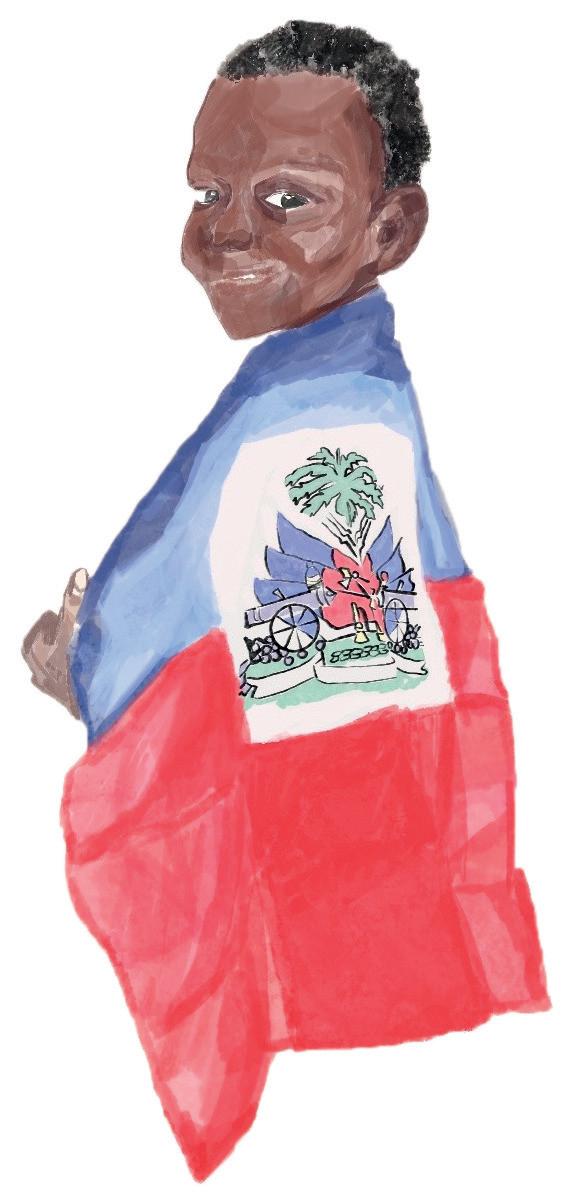
sive interventionist stance has not only disrupted the sovereignty of other nations, but it has also contributed to a global imbalance that continues to favour the interests of wealthier countries over the needs of others.
While hating and mistreating a nation is wrong, I can understand why some in the U.S. might view Haiti with disdain; Haiti's rich history and culture represent a profound challenge to the narrative of Western superiority. e fact that Haiti was the rst independent Black republic and is a beacon of resilience can provoke insecurity in those who wish to maintain their own cultural and
political hegemony. Haiti possesses a wealth that transcends material measures— its history, culture and bravery are invaluable. Yet, this wealth has been undermined, both by internal struggles and external exploitation, leaving Haitians with a permanent target on their backs. e time has come to dismantle the stereotypes and misconceptions that fuel the Haitian hate train, and to recognize the contributions and struggles of a nation that has fought valiantly for its freedom and dignity.


Is pop culture’s love for recycling old trends stifling new creativity?
Safa Hachi @safahachi

It seems like every new fashion trend, movie or song nowadays is recycled from the past.
Whether it's a subtle sample or an outright movie remake, it’s almost impossible to engage with modern media without recognizing patterns from previous eras.
Are we holding onto the “good ol’ days” or have we run out of fresh ideas? Pop culture today is obsessed with the past.
Take music as an example: most songs use samples from earlier decades. Hollywood studios also continue to reboot classics like e Little Mermaid or my personal favourite, e Fantastic Four.
Similarly, fashion is caught in a time loop, with the Y2K revival reintroducing low-rise jeans and bedazzled accessories. ri ing embraces nostalgia by giving pre-loved clothes a second life, whether they're vintage or just a few years old. Fashion brands have been capitalizing on this trend, producing clothes inspired by past decades at current prices.
As clinical psychologist Valentina Stoycheva explains, “Trauma [...] divides our timeline into a before and an a er.” is sentiment is shared as I o en nd myself, during stressful moments, revisiting songs and movies I loved in my younger years—back when life felt simpler and far less overwhelming than it does now as an adult.
Moreover, nostalgia allows for reinterpretation. Films such as Barbie or the ‘90s spin o on the hit series at ‘70s Show demonstrate that remakes can refresh old stories to re ect contemporary values. ey introduce younger audiences to cultural milestones they might have missed, maintaining a link between past and present. It helps bridge generations, making old content accessible to new audiences.
However, when every movie is a remake and every song is a sample, creativity is at risk of being overshadowed by the fear of venturing into uncharted territory. Pop culture, once a place of bold innovation, now
feels like it’s stuck in a holding pattern. Even something on the more niche side like nu metal—a subgenre of metal that had its moment iin the late ‘90s and early 2000s—is making
a comeback. As much as I love bands like System of a Down and Limp Bizkit, it’s clear we’re running out of decades to re-explore when even the most ridiculed music genres nd
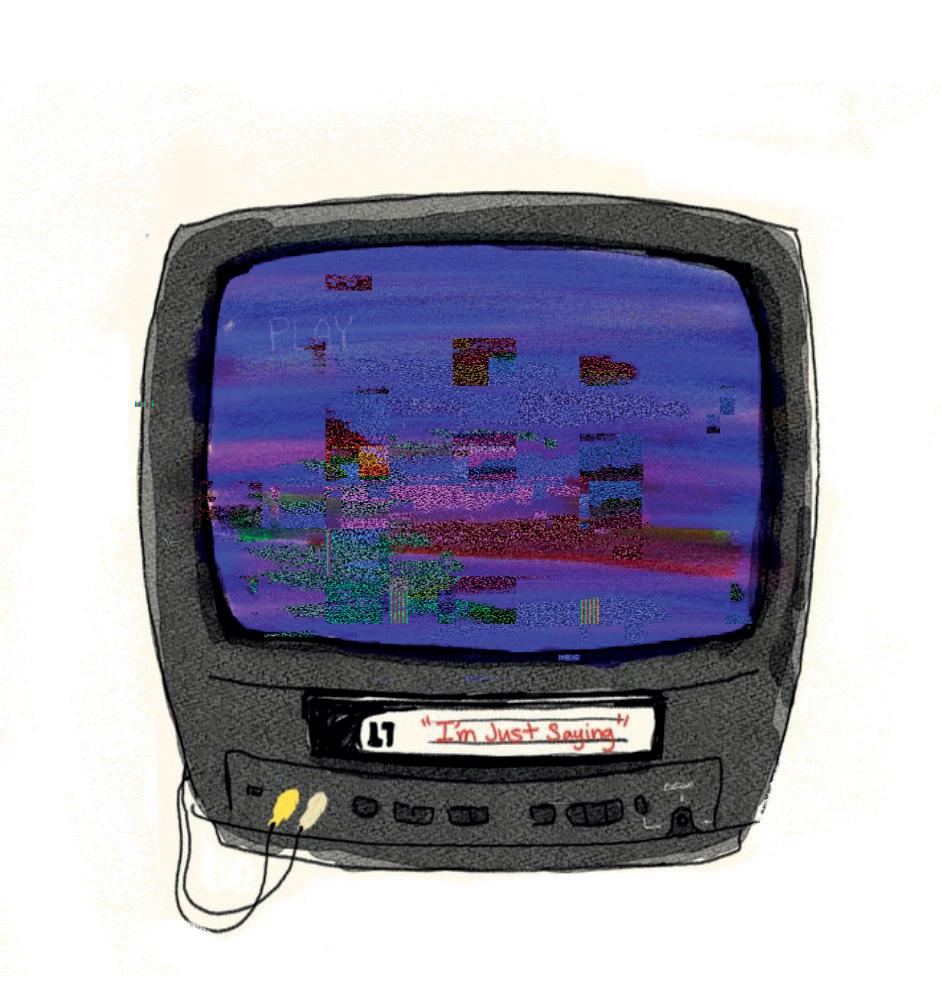
their way back into the spotlight.
Our overreliance on the past is making pop culture feel stagnant. Despite living in a digital age with seemingly endless possibilities, we continue to recycle the familiar. With rapid advancements in technology like AI and virtual reality, creators may feel overwhelmed, opting for safer choices instead of pushing boundaries.
e fast pace of media consumption and the pressure to produce quickly further sti es innovation, making it easier to reinvigorate the past than to create something new. While reboots and remakes o er predictability and nancial security for movie studios, they o en come at the expense of fresh creativity.
We’re at a crossroad. Pop culture must strike a balance between honouring the past and daring to create the new.
Will we keep recycling, or will we break free and push creativity forward? e potential is there, but the leap is ours to take.

My body is the least interesting thing about me
Body neutrality isn’t the solution to body positivity
Hannah Kazemi

@hannahkzmi
Body neutrality is a perspective growing in popularity on body image.
It encourages us to maintain an impartial position when thinking about our bodies and the way we look. It is about appreciating our body for what it is rather than focusing on what it is not, or what we want it to be. It does so without forcing a consistent positive mindset. It is, therefore, more realistic to maintain body neutrality, than body positivity.
But it does not necessarily mean that body neutrality is always a healthy mindset for us to sustain either.
Women are severely prone to body image issues, resulting in over-analyzing the way our bodies look and how we are perceived. One day we feel amazing—we work out, we eat crazy amounts of vegetables and can just feel the fat falling o the bone. But the next

day, we look in the mirror and all we see is disgust; and we attach that to our worth.
ere’s a rhetoric that exists about both body positivity and neutrality being harmful to men-
tal health and self-esteem. Both mindsets focus speci cally on ways to improve our thinking towards the way we look or how much we weigh. e assumption here is that “improving our bodies” is synonymous to getting smaller and losing weight, encouraging overall toxic and unhealthy behaviour.
Regardless of whether we approach this with positivity or neutrality, it ultimately worsens self-esteem and body image when we inevitably don’t see a di erence right away. It brings forward a discussion about which perspective is better to use when thinking about our bodies. Nobody is always positive, nor is anybody always neutral. It is in our nature as humans to be emotional and dynamic, especially when thinking about our bodies and how we look.
Whether you feel good in your body or not, we should all be
working to keep our bodies feeling happy and healthy no matter what size, weight or shape we are. Putting a label on it and forcing ourselves to stick to one way of thinking induces a cycle of frustration. It’s not realistic. Constantly thinking about our bodies isn’t going to magically make us like them any more than we already do.
Moving your body a little bit every day, getting fresh air as much as you can, eating what fuels you as well as what satis es cravings, and prioritizing your heart health over your pants size are all ways to let go of unnecessary labels. Embrace the ways your body changes naturally. Some days, you might hate it, others you might love it—and some days you might not even think about it at all.
Making small steps towards a healthier, well-rounded lifestyle will make all the di erence.


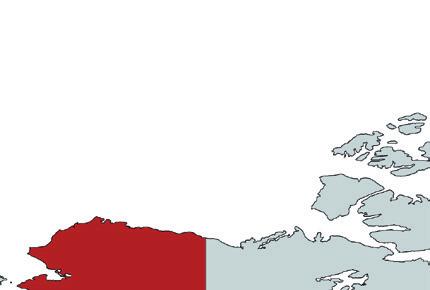




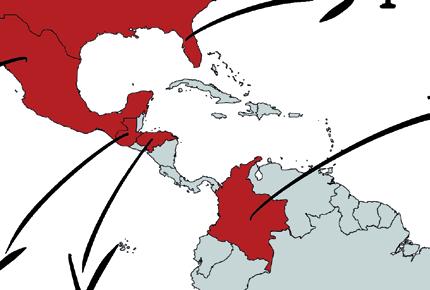

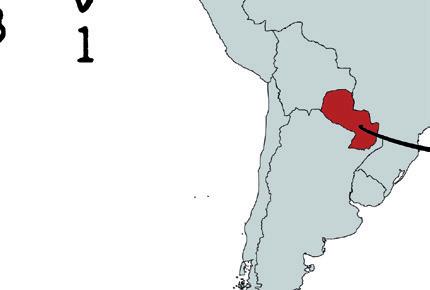


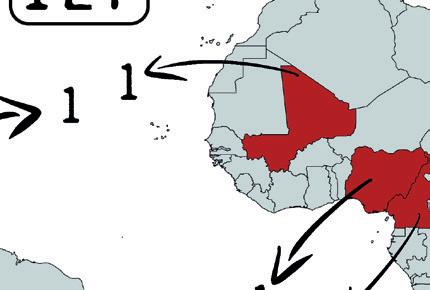




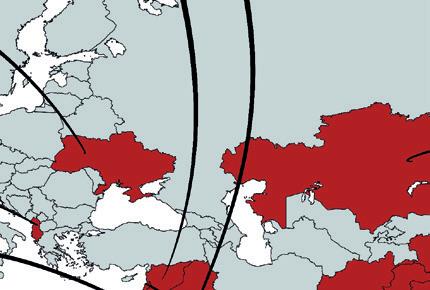
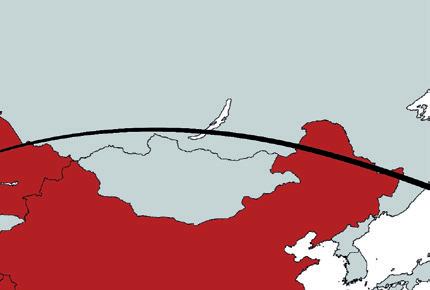
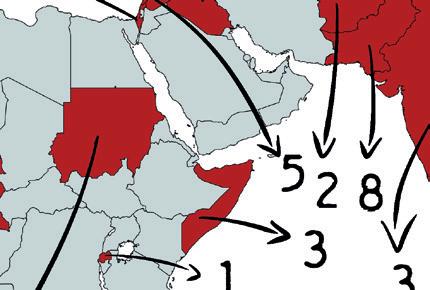
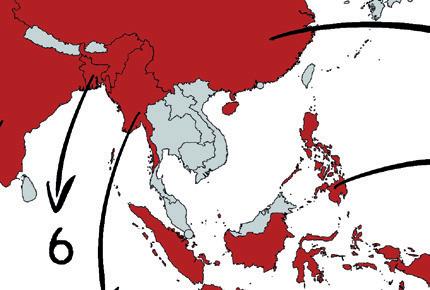
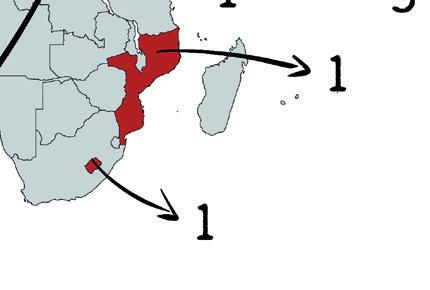






192 journalists have been killed between 2023-2024
Journalists play a crucial role in covering signi cant events, but their safety can be frequently compromised. In active war zones, zones of con ict and during protests, they may face extreme, unjust and sometimes life-threatening treatment.
On Sept. 22, Israeli occupation forces conducted a raid on the Al Jazeera Media Network’s o ce in the West Bank, demanding its immediate closure for 45 days.
e con scation of cameras, deployment of tear gas, and threats made with rearms—all under the pretext of accusing the news organization of promoting terrorism—exemplify yet another
severe overreach of power from the Israeli government.
e International Federation of Journalists (IFJ) recorded that out of the 129 journalists killed in 2023, 83 were murdered in Palestine’s Occupied Territories. is makes 2023 the deadliest year for journalists since the IFJ began recording such statistics in 1990. ese staggering numbers underscore a severe need for accountability, protection and enforcement of safety regulations for all media workers everywhere.
e Link strongly denounces the atrocious treatment of journalists in the Occupied Territories and calls for immediate and deci-
sive action to guarantee the safety of reporters in active war zones. Journalists are essential, particularly in reporting the ongoing genocide in Palestine and play a critical role in spreading awareness about these atrocities.
In 2012, the United Nations established a plan of action on the safety of journalists and the issue of impunity, recognizing press freedom and media pluralism as fundamental human rights. Yet, situations of journalistic suppression persist not only in genocide and war zones but also within our own city.
During a pro-Palestine protest in downtown Montreal in April
2024, journalist Savanna Craig from Community University Television (CUTV) was apprehended while reporting on the demonstration and later released by Montreal police. Charges have yet to be dropped.
Canada currently ranks 14th in the world on Reporters Without Borders’ (RSF) World Press Freedom Index, with its score continuing to decline year a er year. Following Craig’s arrest, RSF executives warned of a troubling trend in Canada: journalists covering protests are increasingly ensnared in police arrests.
Even when not charged, this alarming practice erodes

Volume 45, Issue 3 Tuesday, October 1, 2024
Concordia University
Library Building, Room LB-717 1400 de Maisonneuve Blvd. W. Montreal, Quebec H3G 2V8
Editor: 514-848-2424 x. 7407
Arts: 514-848-2424 x. 5813
News: 514-848-2424 x. 8682
Business: 514-848-7406
Advertising: 514-848-7406
TheLinkis published twelve times during the academic year by TheLinkPublication Society Inc. Content is independent of the university and student associations (ECA, CASA, ASFA, FASA, CSU). Editorial policy is set by an elected board as provided for in TheLinkʼs constitution. Any student is welcome to work on TheLinkand become a voting member. Material appearing in TheLinkmay not be produced without prior written permission from TheLink . Letter to the editor are welcome. All letters 400 words or less will be printed, space permitting. The letters deadline is Friday at 4:00 p.m. TheLinkreserves the right to edit letters for clarity and length and refuse those deemed racist, sexist, homophobic, xenophobic, libellous or otherwise contrary to TheLinkʼs statement of principles.
BOARD OF DIRECTORS 2024-2025: Voting Members: Caroline Marsh, Jessica Hungate | Non-Voting Members: Hannah Vogan, Varda Nisar TYPESETTING by TheLink PRINTING by Hebdo-Litho.
CONTRIBUTORS: Caroline Marsh, Andrea Caceres, Iness Rifay, Yasmine Chouman, Cole Cooper, Olwyn Stowe, jc, Louis Paillier, Dusty Goldberg, Conor Tomalty, Dusty Goldberg, Safa Hachi, Anaïssa Dauphin, Hannah Kazemi, Maggie Aulman, Jude M, Sylvia Dai, Mira De Koven.
House Ads: Myriam Ouazzani and Panos Michalakopoulos
Cover: Alice Martin, Panos Michalakopoulos and Andraé Lerone Lewis
Corrections from Volume 45, Issue 2: In the article “Armenia student union sends appeal to Concordia president” on p.3, stated that Matthew Doramajian was CASUʼs vice-president external. Matthew Doramajian is CASUʼs vice-president internal. The Link regrets this error. In the article “Queer Concordia seeks to launch gender-affirming care pilot project” on p.3, The Link used he/him pronouns for Jessica Winton, instead of she/her. The Link regrets this error. In the article “Canada has a rampant South Asian racism problem” on p.6, stated that Dipti Gupta is a part-time professor in the Fine Arts faculty at Concordia. Gupta is a part-time professor in film studies. The Link regrets this error.
the credibility of journalism by undermining public con dence in reporters’ independence and poses a great threat to press freedom by creating a climate of fear that sti es critical reporting. e Link unequivocally condemns these acts and all forms of press suppression, and asserts that access to accurate journalistic coverage is an essential human right that must be upheld.
It is crucial that more attention is brought to these indictable acts, as they silently undermine the very foundation of democratic societies.














